BUCKET LIST HIKE ADVENTURES IN WORKAMPING

TIPS FOR YOUR TRIP
ALASKA OR BUST

HAVASUPAI INDIAN
ISSUE 6 • NOV/DEC 2020 TRAVEL | WORK | EXPLORE
RESERVATION
FLORIDA WEEKEND WARRIORS
A FAMILY THAT CONTINUES TO GROW
Having a Grand Design is more than just owning an RV. It’s an experience of belonging to a vibrant, active and supportive family.
RAISING THE BAR IN CUSTOMER SERVICE
Every Grand Design RV is backed with a class-leading 3-year limited structural warranty and a customer service team known for doing the right thing.
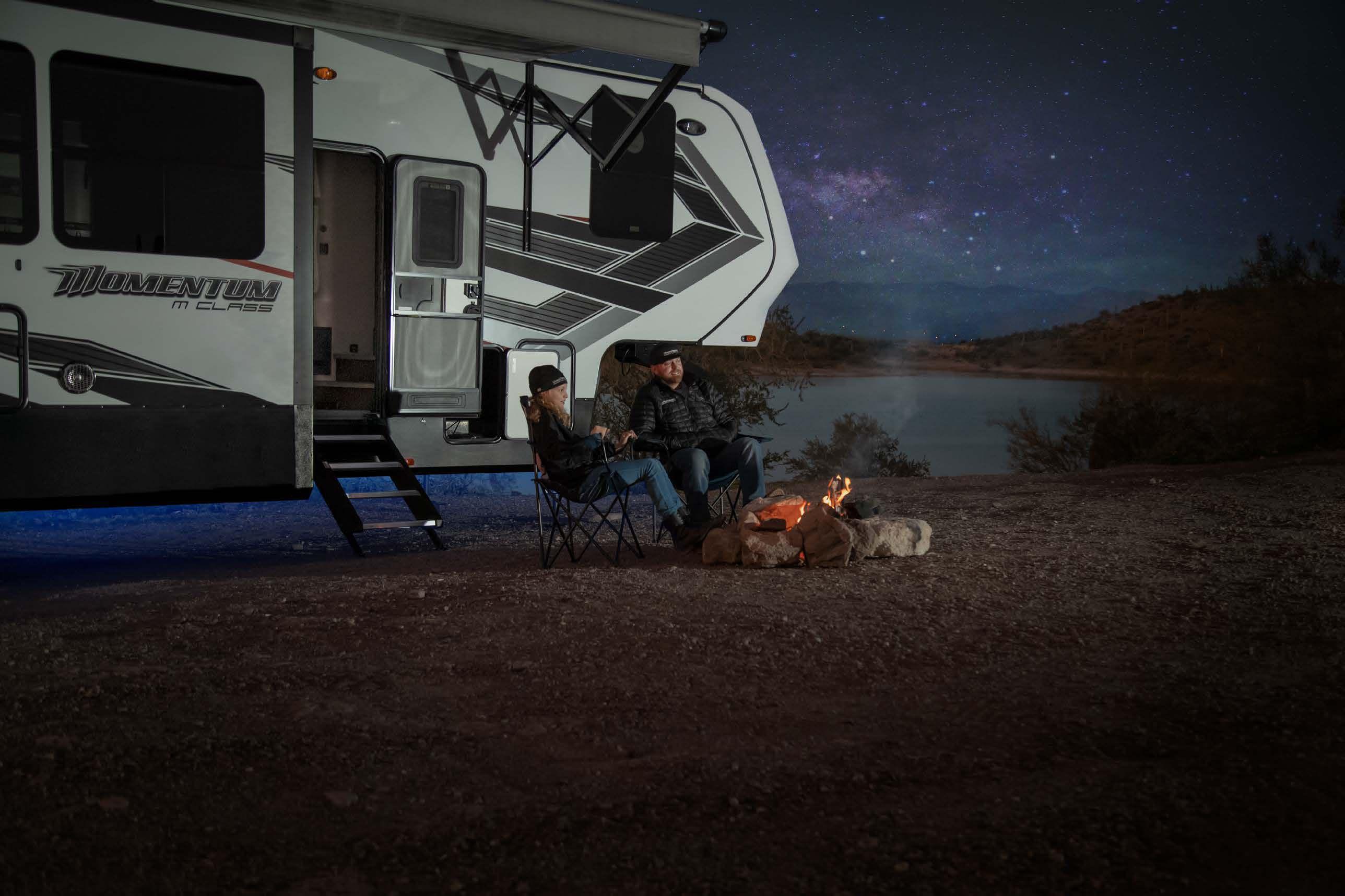
2019 TRAILER LIFE READER’S










































CHOICE GOLD AWARD IN ALL 3 CATEGORIES!























LEARN MORE...


WE STRIVE FOR NOTHING LESS THAN CUSTOMERS FOR LIFE.














































FREE OVERNIGHT CAMPING AT 1000+ UNIQUE
DESTINATIONS
We are a network of wineries, breweries, distilleries, farms, and attractions that invite RVers to stay in 1000+ stunning camping sites. The $79 yearly membership gives members unlimited access to stay overnight at any one of our Host‘s locations. We kindly ask our members to support their Hosts by purchasing one of their local products with each stay.


USE PROMO CODE “ROOTLESS” TO SAVE 15% AT HARVESTHOSTS.COM
TRAVEL29
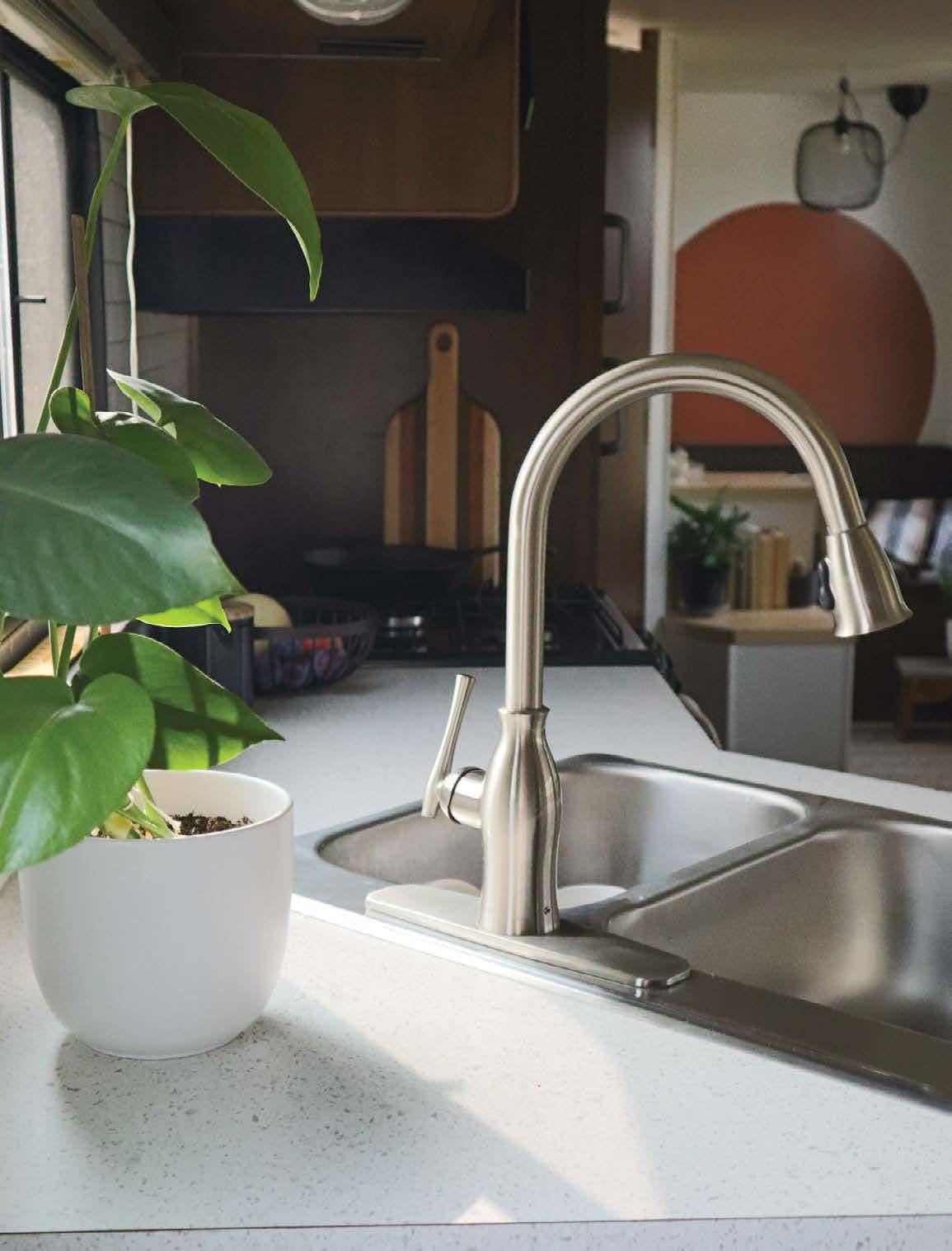
PAGE
Our unique, computer-designed, adjustment-free hitch heads keep your trailer centered to your tow vehicle. Spring steel bars augment the suspensions of your tow vehicle and trailer, reducing road shock.








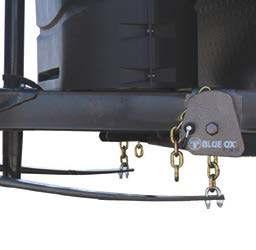


SwayPro™

Weight Distribution + Sway Prevention

Distributes trailer tongue weight evenly.
Prevents sway by bad roads, wind or weather.
Prevents sway even in rain or snow.
No noise created by friction.
TrackPro™



Weight Distribution + Sway Management



Distributes trailer tongue weight evenly.
Prevents sway by bad roads, wind or weather.
Caster with additional points of friction.
6 | ROOTLESS LIVING | ARTICLE NAME
Motorhome Mount Tow Bars • Baseplates Brakes • WD Hitches • Towing Accessories ®

33
WORK
PAGE

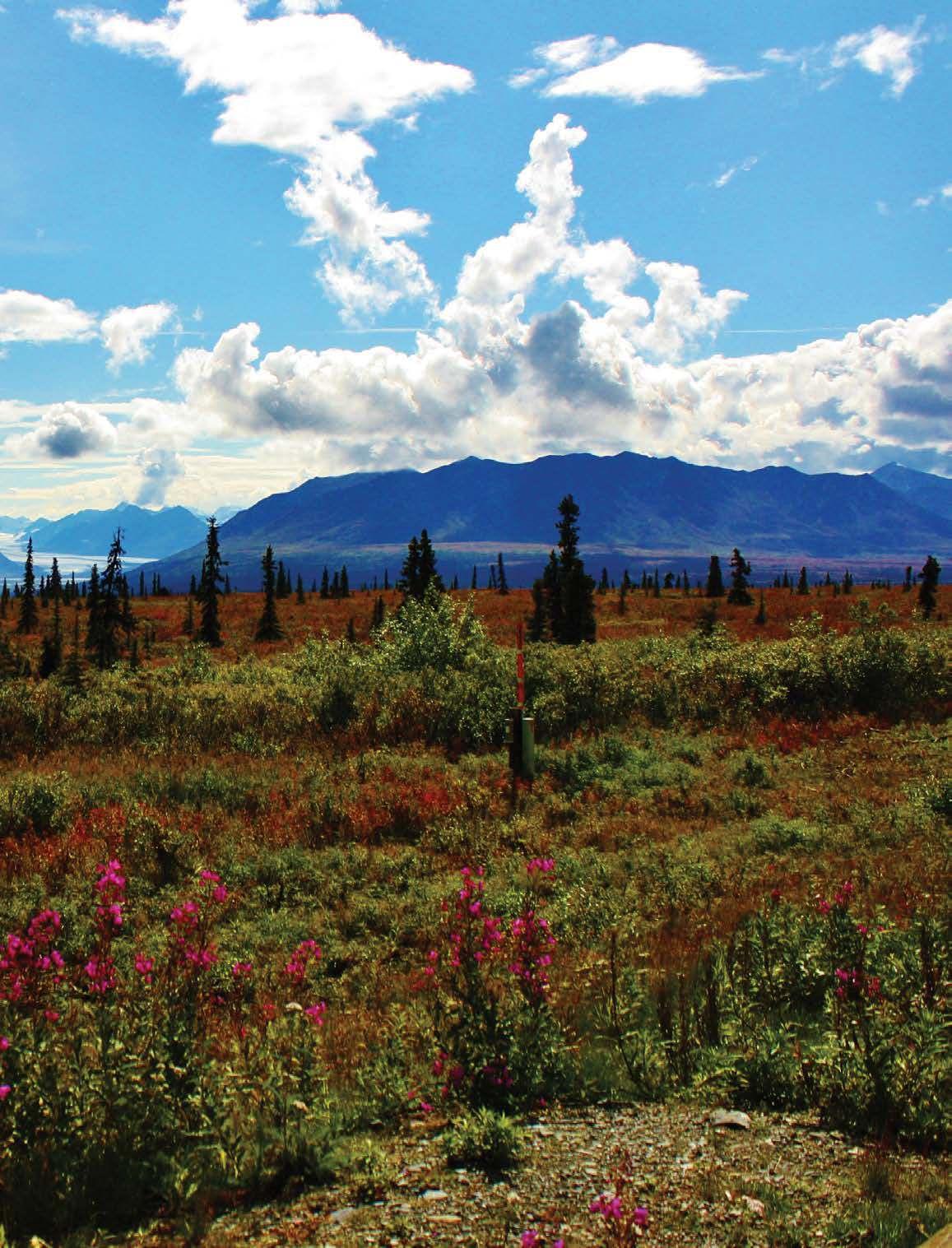
EXPLORE 78PAGE

TABLE OF CONTENTS
Page 13 | From the Publisher
Page 15 | From the Editor
Page 17 | The Feed
Page 19 | The Bucket List Hike Havasupai Indian Reservation
Page 25 | RV Family Renovators
Page 29 | Sun Chasing Cottage on Wheels RV Renovation
Page 33 | Caleb Barnaby Designs Recycled & Handcrafted
Page 37 | Adventures in Workamping! Find Your Ideal Workamping Job
Page 41 | Future Solutions Advanced Energy Solar Upfits
Page 46 | Driving Towards Financial Independence
Page 49 | Weekend Warriors Exploring Florida State Parks
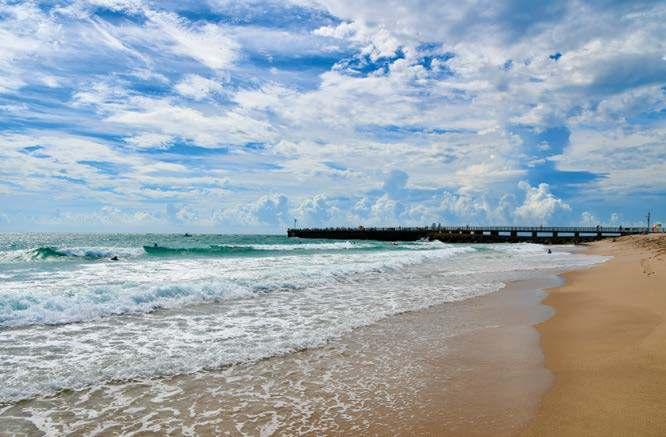
Page 53 | Freedom to Go and Freedom to Stop
Page 56 | When The Numbers Add Up One Epic Vacation
Page 59 | How Vanlife Helped Me Coping with Grief

Page 63 | Boondocking Is …

Page 64 | … A Beautiful Reward
Page 68 | … Enjoying Self-Reliance
Page 70 | … Freedom
Page 72 | Solar Q & A Answering Your Solar Questions
Page 74 | Boondocking Red Lodge, Montana

Page 75 | Easy as Pi Choosing a Rootless Life
Page 78 | Alaska or BUST Tips for Touring Alaska
Page 82 | Gear Guide Gift Ideas for Digital Nomads
Page 86 | Contributors
For Digital Nomads, By Digital Nomads
Page 87 | Podcasts for the Drive
ROOTLESS LIVING | 11
59 68 49 37
LIFESTYLE. YOUR POWER. YOUR BUDGET. YOUR SOLUTION. YOUR



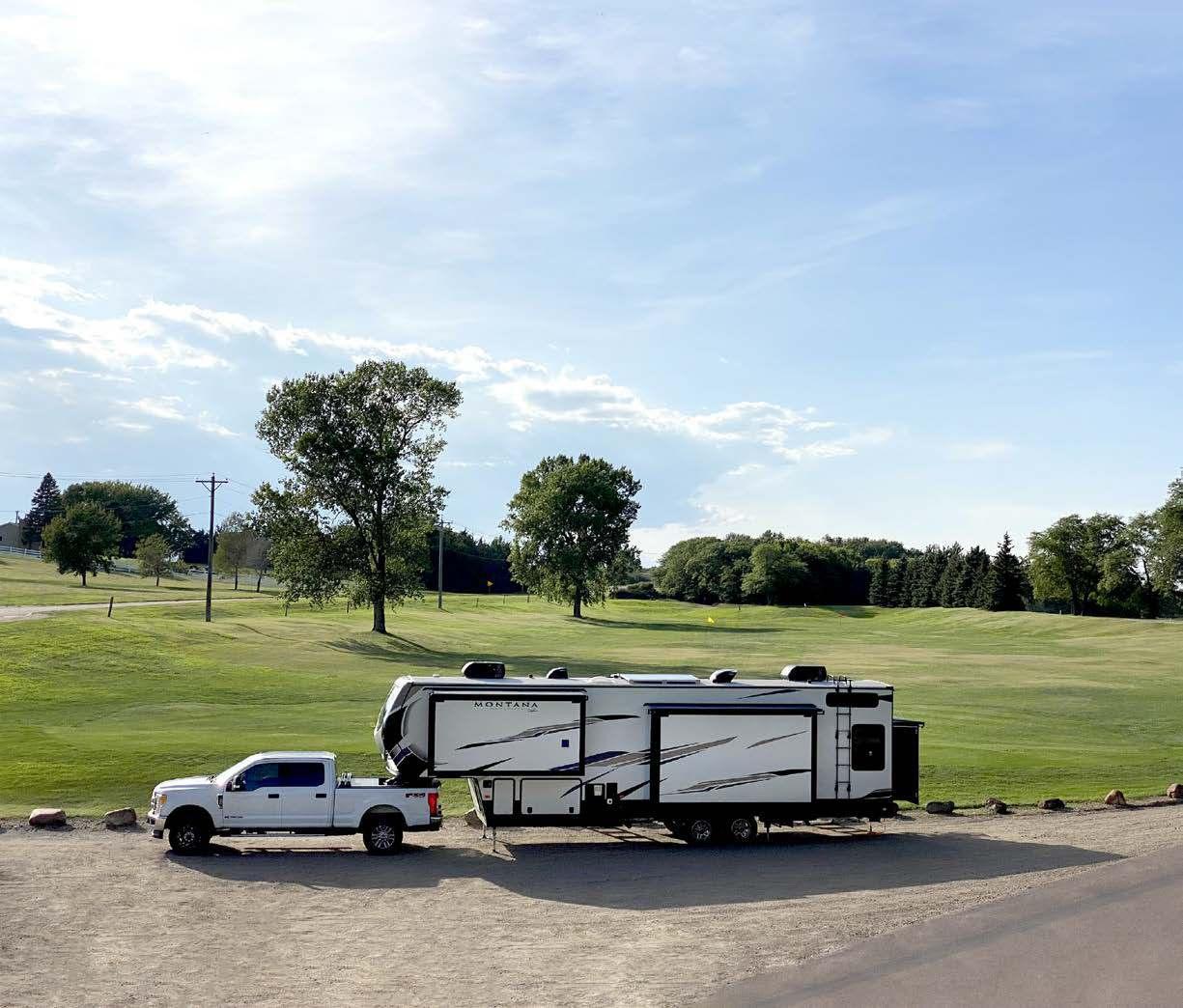
12 | ROOTLESS LIVING @ @
FROM THE PUBLISHER
Ican’t believe year one of the magazine is complete. To think it was a year ago when we announced we were going to start a publication about the digital nomad lifestyle (aka traveling while working) and the reaction was amazing, as it has been with every new issue since.
There are a lot of things we are really proud of when it comes to the first year of starting a business, but nothing has given us more pride than the Rootless Living community. It’s amazing to see how that term has taken off and how people are able to use the #RootlessLiving hashtag and connect with others that are living the same lifestyle.
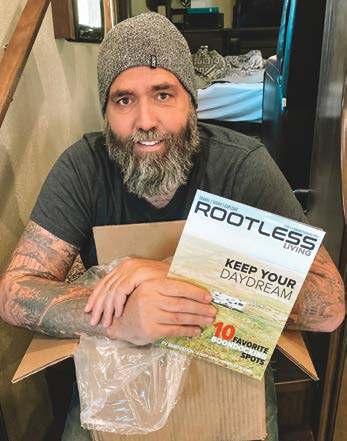
Another thing that surprised and amazed us was that once someone subscribed, they went back and downloaded all the previous issues as well. Even more shocking, people are buying all the previous print editions when signing up for their annual print subscription.
What this showed us was there wasn’t a way to get this information offering many points of view. There are plenty of blogs and YouTube channels but we wanted to find a way to allow people who might not necessarily create content for the masses, to still be able to share their story. This magazine is for Digital Nomads, by Digital Nomads.
One of my favorite things that happens is right before I record a podcast with a guest, they want to know why I picked them. Usually, this is their first time on a podcast or they don’t consider themselves to have a large social following. Their social following has nothing to do with their unique story and I love getting these stories out there for people to hear and read.
As I write this I am in Elkhart, Indiana … the RV capital of the world and business is booming. Recent months have been some of the best in over 40 years for the industry. I think we are going to see a huge increase in people looking at the digital nomad lifestyle as a real option now that they might be fully remote and even homeschooling their kids.
Thank you so much for being part of the Rootless Living community. We look forward to helping so many people navigate this lifestyle and tell their stories in 2021 and beyond.
Until the next issue … Stay Rootless.
Demian Ross @demianross demian@rootlessliving.com
ROOTLESS LIVING | 13
FROM
PUBLISHER
THE
seek adventure find community




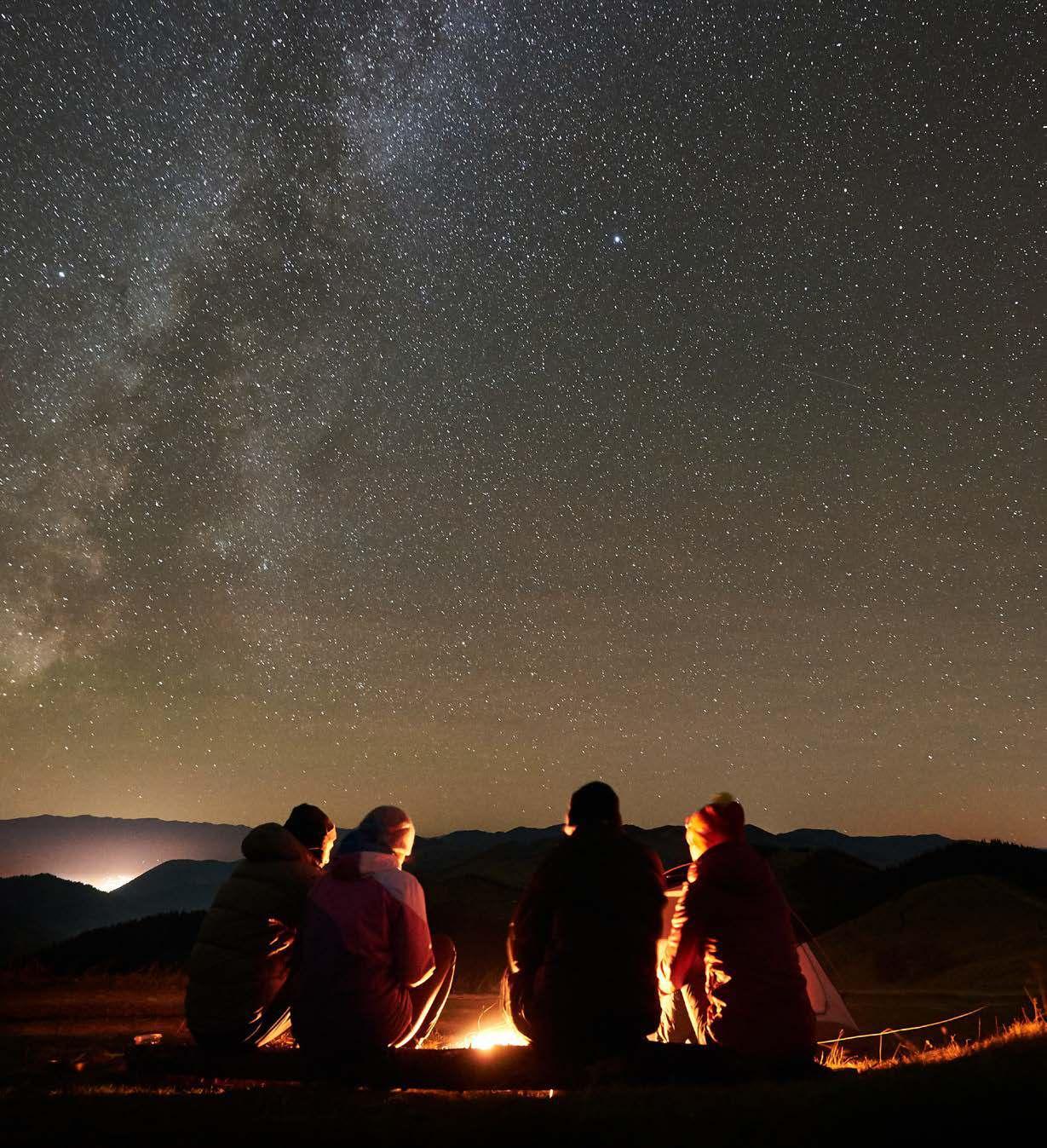
yet.
Today!
Nomad Near Me connects you with friends you know as well as friends you haven’t met
Download
FROM THE EDITOR
What a crazy, fun year this has been! With unknowns around every corner and plans changing daily, the year taught us all a little more about what’s important in life and how important it is to be able to adapt and be open to change. This time last year we were wrapping up a whirlwind trip, sightseeing across 18 states in a little over two months. This whole year, we have been to five states. Luckily, we did get to experience two more new states.
It’s been a year since we launched this magazine on Kickstarter and it simultaneously feels like it’s gone by really fast and somehow really slow. With every new issue, I pull out my iPhone and take the new photo of all the issues all stacked together. I remember where we were when we added each additional issue and how great it felt to be able to have completed another one. These are the memories and milestones I hope to keep with me always.
I am truly honored to be able to connect with fellow nomads and share their stories in every issue. I’m a big believer in there being no one way to do anything. Sharing unique, dynamic, and different stories from ordinary people is what inspires me and I hope it inspires you.
I’ve learned there is a common theme both in business and taking off to live a nomadic life - you just have to do it. Do it with all the unknowns and figure it out along the way. That’s the adventure and that’s where the fun is. And for a planner like myself, it’s often one of the biggest challenges.
As we wind down this epic and historic year, I hope you take the plunge and do that thing you’ve been thinking of doing. Start the new business, buy the RV, put the house up for sale, or give your notice to pursue your dream. One of the best decisions I made in life so far is the one that left people thinking I was crazy. And I have never looked back with regret.
Nikki Kirk @nikkirk7 nikki@rootlessliving.com

ROOTLESS LIVING | 15
FROM
THE EDIT OR

THE FEED#rootlessliving

“Oh I am so happy to find this magazine - loving this nomad life!” @Runawaymusbus

@ThomasFamily_Life
“Our first boondocking adventure is in the books! We knew when we set off on this new adventure we wanted to boondock as much as possible.”
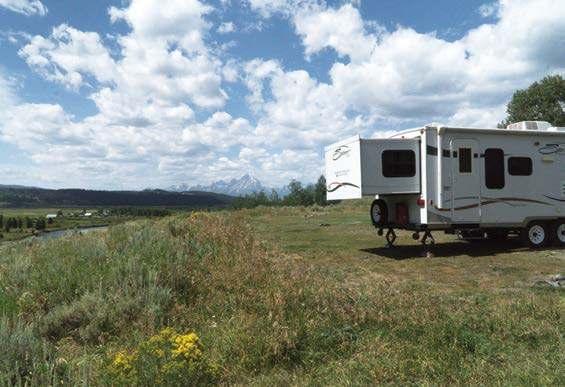
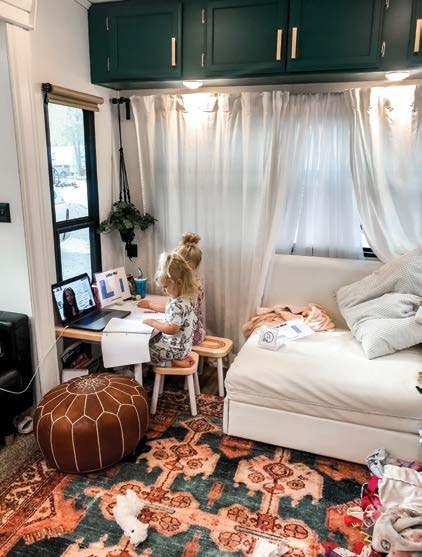
@LessThingsBigDreams
“An amazing resource for those interested in learning more about full-time road living!”
@Togetherness_Redefined
“I hope it gives so much hope to anyone who worries about taking a risk on big dreams and falling on your face.”
THE FEED | ROOTLESS LIVING | 17
Join the Rootless Living Community and see your shots in the magazine! Tag us on Instagram @RootlessLivingMag or use the hashtag #RootlessLiving. You can also follow us on Facebook @RootlessLiving
“Motherhood isn’t glamorous. But when you’re in a space of gratitude and growth, you can be present for moments like these.” @UnearthTheVoyage
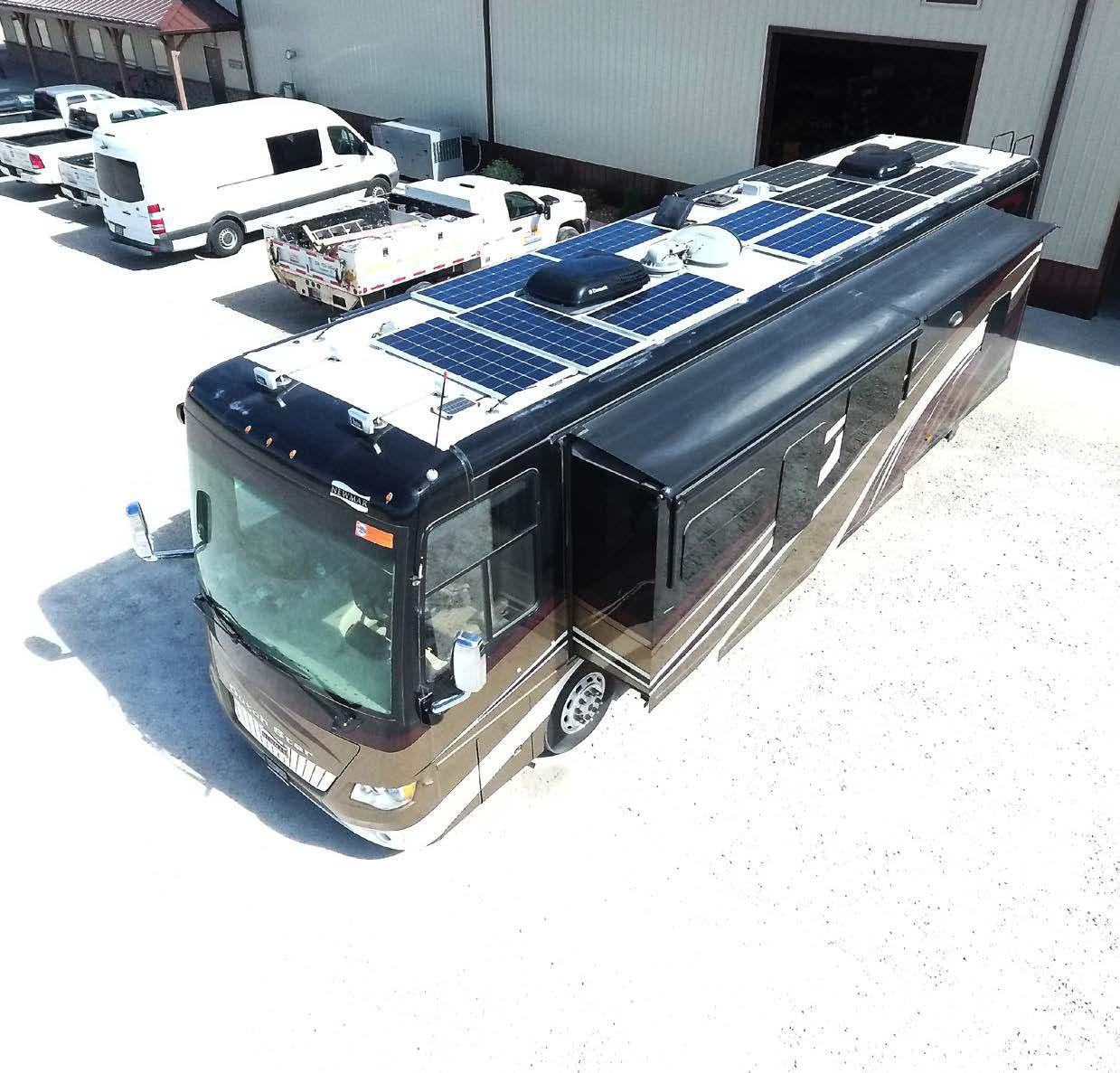





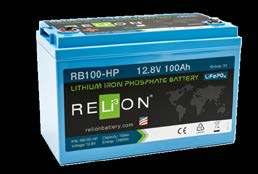

CLICK HERE for More Info!
THE BUCKET LIST HIKE
 By Marcus & Megan Wickes
By Marcus & Megan Wickes
Havasupai Indian Reservation

This month we finished our 50-state chase and have officially visited every state in America. Yay!! We reflected on our favorite memories from the past couple years of traveling full-time, and the red rock cliffs and unreal waterfalls of the Havasupai Indian Reservation in Arizona definitely makes our “Wickes Top 6” list of incredible adventures.
Havasupai is arguably one of the most beautiful and coveted spots in America and they’ve basically taken care of any overcrowding issues by using a permit system. A limited number of permits are released online at HavasupaiReservations.com each year on February 1st and sell out within minutes. We recommend registering for an account in advance and having a few preferred travel dates in mind so you can log on and snag your permits fast.
All reservations are for four days and three nights. You don’t have to stay four days (not sure why you wouldn’t though, since it’s basically paradise) but you still have to pay for the full length of the permit. And you can’t add more days.
Many people try for years to get permits so we expected a challenge on our first try. Unlucky for us (but as expected), the tickets were sold out before we could even get the website to load. We had a couple phones open, a couple laptops, a desktop computer, and a friend even trying to help. But the website bogged down and wouldn’t load. By the time the page loaded, 30 minutes later, all permits were gone for the season. We were pretty disappointed.
But we didn’t give up hope! There’s a transfer/ cancellation list and I checked the list daily for a few months before we got lucky and found enough permits available for our group to go. Challenge #1 complete!
In addition to the hiking permits, we reserved pack horses to carry our heavier bags down the canyon to the campground. We were already packing three little humans and figured we would have our hands and backs pretty full. Also worth noting, kids under the age of seven don’t require permits so our three boys were FREE!
The trail is 10 miles down to the campground. We hiked at least six more miles of additional trails once we were down in the canyon. The hike into Havasu Canyon can be extremely hot. Our permits were for the end of August and we were advised that the state of Arizona was under an extreme heat advisory. So, we knew we were in for some hot days.
20 | ROOTLESS LIVING

Most of the hike through the canyon down to the campground was in direct sunlight so everyone suggests you hike early to beat the heat. We woke the kids up and drove down to the trailhead at 4 am. The road to the trailhead is a 63-milelong road off the main highway so we probably should have woken up even earlier. As it was, we didn’t start hiking until 6 am. The parking lot near the trailhead is small so we ended up parking about a mile up the canyon which added more time and toddler stress to our early morning.
Another reason to hike early is to beat the crowds down to the campground. All the camping sites are first come, first serve. There’s a daily rotation of campers leaving and new campers coming in at different times. So, if you want to choose a prime location, you need to beat the other hikers down the canyon. Because of the late start, we decided to kick up a quick pace as we started down the switchbacks.
And then I felt something snap in my knee. We were barely a few minutes into the downhill portion of the hike. The first mile is a series of steep switchbacks. It's a well-maintained path but the constant downhill pressure on my knee early in the morning likely didn't help.
I found out later that I had torn my ACL and MCL for the second time in two years. I hate getting old. So, at 6 am with sunlight starting to say hello on the horizon, I had a choice to make. We could hike out and call it quits. Come back and try the hike another year after my knee was healed. Or we could make it work. We had prepped so much to get here and paid
quite a bit, so I wasn't going to turn around!
We made it work. The boys were champs and did a lot more hiking than we expected since I couldn’t carry much weight on my back. Our son Jonah, age four at the time, really impressed us by hiking 8 of the 10 miles down to the campground.
The hike down the canyon is a unique experience. The majority of the trail is relatively flat with a slight downhill grade. It takes endurance, of course, to walk 10 miles, but we've done longer and much more challenging hikes.
Every day we spent down at the campground we saw people leaving around 3 am to hike back out of the canyon. It's not like you sleep that well when you're camping in the heat anyway, but the reason for the early start is to avoid direct sunlight in the open canyon.

We made it about halfway down the trail before we were hit by the heat. The hike in the shade before the sun was up was actually pleasant. But as we hiked the last few miles in the sun, we slowed down and drank a lot of our water.
We made it to the village of Supai in about five hours. Most estimates online say you'll take 4-6 hours to make it down to the campground, so we felt like we were making pretty good time. Tip: Buy ice cream when you get to town! Especially if you have kids in tow. It gives them the necessary energy for the next part of the trek.
The final two miles down to the campground took us almost one and a half hours and most of that was because of the sun and extreme heat.
Most people choose to camp at the campground down by the water, but you can stay at a lodge in Supai village if you don’t want to camp in a tent. You’ll still end up hiking two miles down to the river and waterfalls and then two miles back up the hill to the lodge every day. So, I’d suggest camping just so you have more time to relax and spend in the water.
The campground is long and narrow as it stretches along the Havasu Creek. By the time we arrived, many of the scenic spots on the sandy banks of the creek were taken. We ended up near the beginning of the campground with traffic coming and going all day. Plus, the famous Havasu Falls is just up the trail from the campground so it was an easy walk anytime we wanted to go relax.
There are many cottonwood and elm trees that line the campground so there's ample shade from the sun. The trees also make it convenient to tie up your food in a bag to keep out of reach of the pesky squirrels. Definitely pack a hammock with straps to hang in a tree. It’s the best way to relax in the shade with a cool breeze when you’re not out swimming.
We stayed our full reservation of four days and three nights. Obviously the first day was hiking in the morning so we didn't have a lot of energy remaining that afternoon. We basically went to bed when the sun went down.
That meant we had two full days to explore the canyon and hike around to all the waterfalls. We took our kids on the short half mile walk over to Mooney Falls and decided it was too dangerous to continue down through the tunnel to some steep stairs and chains to the base of the waterfall. Ominous signs near the top of the cliff and instructions from the welcome center back in town warned us that kids likely shouldn’t attempt the wall climb.
But luckily, we had help. Marcus’s mom and sister got permits and came down with us, so we took turns watching the kids and hiking to the waterfalls.
When it was our turn, we hiked to Mooney Falls just before sunrise. It was tempting to stop and enjoy the views since we were all alone. But the waterfall is enormous and powerful so there’s not much you can do. There’s a fun rope swing a little way down the creek and some benches to sit and relax. But save the swimming for the other waterfalls.
We spent every day down in the canyon at the famous Havasu Falls. It's beautiful and there's so much to do. We jumped off little cascading waterfalls, did flips off tree stumps into the water, swam under the waterfall, explored the mosscovered rock walls, and took naps later into the afternoon. Be sure to bring cash to buy Navajo Tacos. They have a little
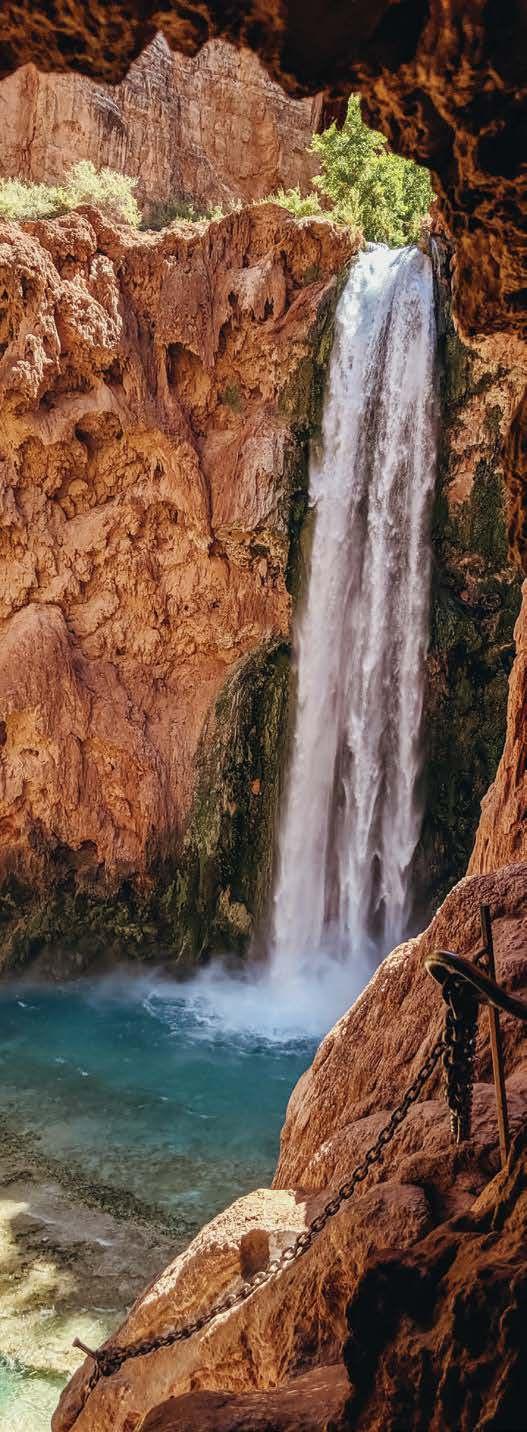
HAVASUPAI | ROOTLESS LIVING | 23
food stand up the trail from the waterfall almost every day. It’s the only spot down in the lower section of the canyon with any sort of cell service if you need to make a quick call.
By our fourth day we were ready to hike out. We felt like we saw what we wanted and enjoyed our time in the canyon. We discussed our options and decided it would be best for my knee and our sanity with tired kids if we took the helicopter ride out instead of hiking the entire 10 miles back to our truck at the trailhead.
This was the first helicopter ride for any of our kids so they thought it was an exciting adventure taking the 10-minute flight. When we landed, Mason was pretty surprised that we were back at our truck. He's a little math whiz and asked, "It took us about seven hours to hike in and only about 10 MINUTES to fly out? Why didn't we take the helicopter on the first day instead of hiking so much?"
Great question little guy. We’ll garnish your allowance wages for the next 10 years. But we enjoyed the experience of hiking down and flying back out. Having a bird’s-eye view of the canyon that we hiked was pretty fun.
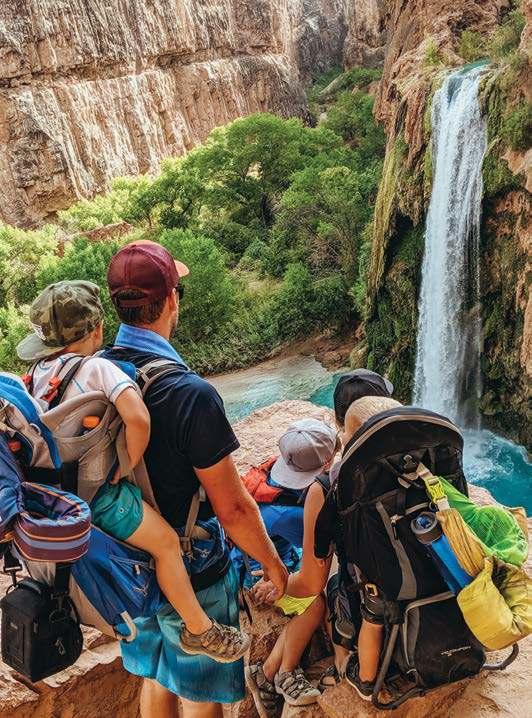

If our pictures don't convince you to add this destination to your wish list, it's because we're still novice photographers! This place is stunning and you have to visit to have the full experience!
About the Authors: The Wickes (pronounced Wix) are a fulltime traveling family of five. They sold their home and 99% of their belongings and moved into an RV. They were told they were crazy (which is partly true) but remodeled their brandnew RV and headed out on a road trip seeking adventures in all 50 states. Follow their adventures on Instagram @so.wickesited.

24 | ROOTLESS LIVING | THE BUCKET LIST HIKE
Hi, there! We are Rachel and Jake Oldenburger and we are an adventure-seeking family put on the RV lifestyle path after living through a life-changing event which made us reevaluate, well just about everything.
In 2016 our first son was born. We named him Shea after our favorite baseball team, the New York Mets. Shea was born with half a heart and had two open-heart surgeries before he was 5 months old. As a family, we fought through some really hard and scary times. Coming out on the other side of it all really changed us, and we decided we were going to make every single day for Shea one to remember. Whether it be an afternoon of playing in the sandbox, or a week vacation to Disney World, we wanted to make sure we were LIVING life, not just living through it.
RV Family Renovators
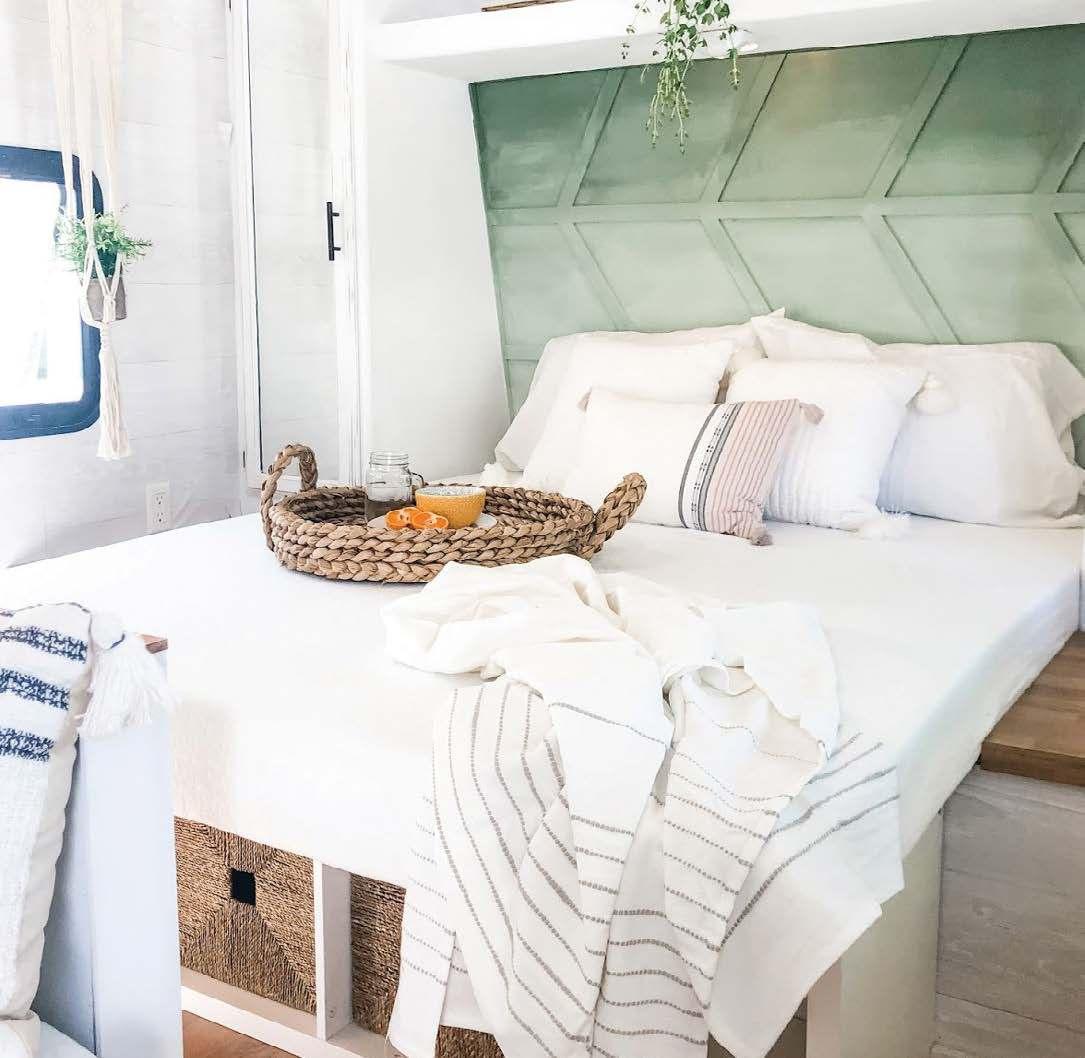 By Rachel Oldenburger
By Rachel Oldenburger
Not too long after Shea’s surgeries, Jake quit his job to land his dream job as a Civil Engineer in New York City and I quit my teaching job to pursue my lifelong dream of owning my own custom art business and to stay home with Shea. This was the start of our family building a lifestyle that worked for us, and not just making what we had work. I think this is a realization a lot of RV families go through, doing something that’s considered out of the “normal” realm and focusing on the things that are really important: family time, adventure, the outdoors.
In 2018 we rented an RV and drove through New Mexico, Utah, and Arizona. After a wonderful trip RVing through the Southwest, with our grand announcement of the soon to be brother, Cameron, at the top of the Grand Canyon, we realized
ROOTLESS LIVING | 25
something quickly. We were hooked on the RV lifestyle. Within 6 months of returning home, we had purchased our first RV, a 2014 Forest River Salem Cruise Lite 261BH and began plans to renovate it.
As an artist, the process of designing our RV was so exciting! Searching through Instagram and YouTube, there were a lot of RV designs I was able to pull inspiration from, but not many accounts explained how they got their RVs to look so wonderful. I took this as an opportunity to create an Instagram account where I showed everything I renovated in the RV and the steps I took to complete the projects. I really just wanted to create a space where people could come for inspiration and instruction.
I did 90% of the renovation myself, using my background in custom furniture painting and repair to help lead the way. But really, anyone can renovate an RV! I think renovation comes

off a little intimidating to most people, but a little research and confidence can go a long way! Jake did all the plumbing and laid down the new flooring, but with the exception of that, this RV was my little project and I loved every minute of it. My design style is along the lines of a modern farmhouse, and I chose this gorgeous green to accent our trailer in a subtle but beautiful way! With the combination of green and white painted cabinets, I was able to lighten the space but still show our personality through a funky, fun color pop.
We worked three long months on our RV, renovating every inch of the space before we took our first trip. Our boys absolutely love our little home on wheels, especially their bunk beds. The main projects we tackled in the RV were new flooring, painting the walls and all the cabinets, taking out the pull-out couch and dinette, and replacing them with more functional seating and a five-foot long dining table we made from an IKEA countertop.
We took down the bathroom cabinetry, replaced the toilet, painted the tub with enamel paint, and added custom accents on our doors, cabinetry, and headboard. We updated the kitchen and bathroom sinks and faucets, the countertops, and backsplash. We also changed out all the window dressings, mattresses, bedding, and pillows. Our total renovation cost was around $4,000 and we spent another $2,000 fitting the space out. This is the first RV we’ve owned so we needed to buy just about everything to enjoy a weekend away!
My advice to anyone who wants to tackle an RV project is first to do your research. Learn about the best products to use, the correct processes, and the best maintenance. I also suggest you make a budget so you can decide which projects you want to tackle. Just a simple refresh in an RV such as painting walls, changing window dressings, and adding some accent pillows can make a huge difference. You don’t need to go for the full renovation if you don’t have the time or money to do so!


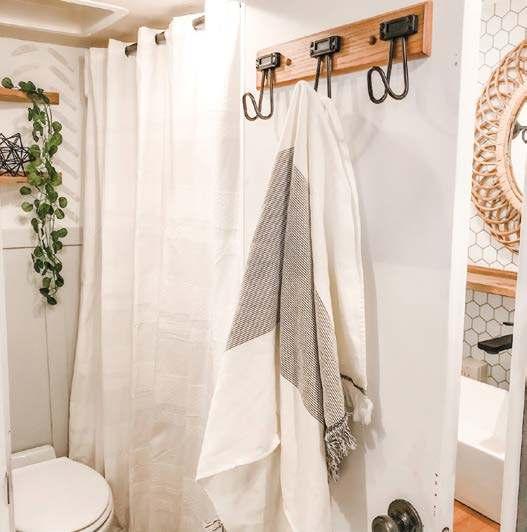


We have only been traveling in our RV for four months, but it’s been a summer to remember and we’ve been able to check out some beautiful spots throughout New York, New Jersey, Connecticut, and Pennsylvania. With two young boys, we are loving camping at sites that have access to beaches and swimming.
We are looking forward to all the adventures that lie ahead of us, and with the announcement of our new business, RV Family Renovators, the future renovations as well! You can visit our website for more information on the services we are now offering at rvfamilyreno.com or keep up with everything we are up to on our Instagram @rv.family.reno
See you there!
RV FAMILY RENOVATORS | ROOTLESS LIVING | 27

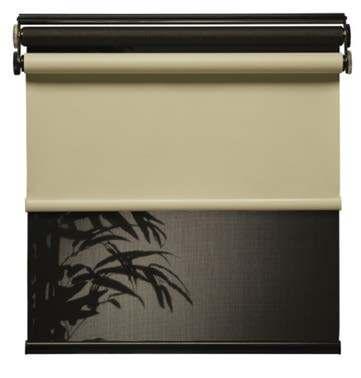

Keeps the heat out. Keeps the light out. Easy to use. NO SHADE
SHADE NITE SHADE Keep your RV cool and private while still enjoying the scenery outside. The 5% Day Solar Screen allows you to see out, but others can’t see in. Slow-RiseTM Day/Nite Roller Shades ShadeSmithCA.com • (714) 345-6144
SUN
The
Sun on Cottage Wheels Chasing
Full-time RV life was not our original plan… When we first discussed buying a trailer, it was going to be our holiday home – a “cottage” – on Prince Edward Island in eastern Canada. We were driving around looking at cottages, as one does to pass the time, and suddenly decided that we should summer in Prince Edward Island. From that point on, unbeknownst to us, the full-time RV life train had left the station and we were up for a wild ride.
No more than two weeks later we were back in Alberta, trailer purchased, and starting renovations. We actually did two rounds of renovations with a winter break in between. The first round of renovations was completed in the fall of 2019. Round one included painting and wallpapering the walls, updating the master bedroom headboard, installing peel and stick kitchen backsplash, and removing the top bunk from the corner bunk unit.
By Jennifer Jennings
One might ask “How come I’ve never seen wallpaper in your rig?” Well, during that winter break, the Alberta winter ruined the wallpaper. When we returned to check on the rig in the spring, all of the wallpaper, originally installed in the living room and the entirety of the bathroom, had fallen off the walls. It turns out that peel and stick wallpaper is not made for extended periods of -30C (-22F) weather.
Over the winter, we also had a lot of time to think. During this time, we decided to throw caution to the wind and make the leap into full-time RV life. Our plans changed from “living in Alberta and summering in Prince Edward Island” to “wintering in Mexico and summering in Prince Edward Island” – a true snowbird lifestyle.
In February 2020, we headed down to Mexico for our yearly trip, but this time we did things a little differently and skipped the 5-star resorts and opted to stay in Airbnb’s. We rented a

ROOTLESS LIVING | 29
car and spent 10 days exploring the Baja peninsula with the purpose of touring RV parks and finding a winter home. We explored RV parks in San Jose del Cabo, Los Barriles, Todos Santos, La Paz, and everywhere in between. But our new home ended up being in the one spot we never expected.
Right under our noses on the same property as our casita Airbnb were three private RV spots! One was home to our fabulous new neighbors. The other two were empty – ripe for the choosing! We ended up committing to one of the spots and started making plans with our new neighbors. Filled to the brim with excitement we came back to Alberta ready to restart the renovation process and make the necessary preparations to move down to Mexico.

Well, you know what happened in March 2020 …
But we didn’t let the pandemic derail our plans! When Alberta thawed, we restarted the renovations. Round two included removing what remained of the wallpaper, repainting all the spots we hadn’t, removing and replacing part of the dinette and jackknife couch, removing the bottom bunk, replacing the kitchen and bathroom counters, installing a residential kitchen sink and faucet, installing a residential bathroom faucet, and building an office! Knowing we were going to live in the trailer full time meant that we needed to ensure everything was the way we wanted it to be and was fully functional for our lifestyle.
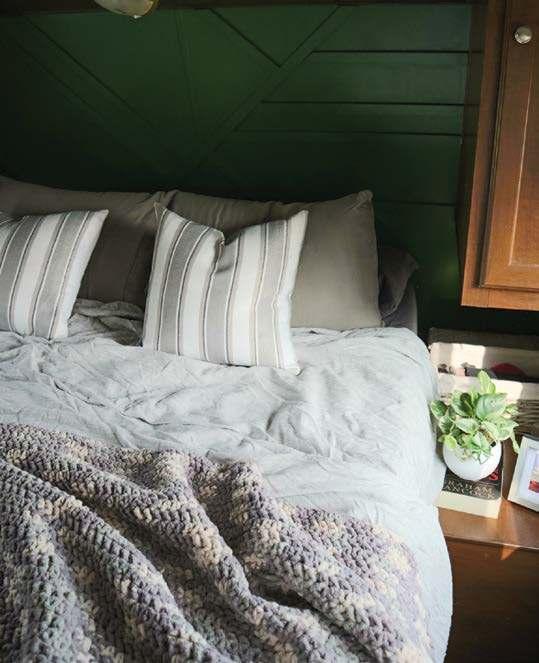
30 | ROOTLESS LIVING
Finally, in July 2020, we moved into our renovated 2015 Prowler 285LX. We made our maiden voyage down to southern BC and planted ourselves at PV Ranch just outside of Grand Forks. After the craziness of our maiden voyage, we more or less decided that we would be stationary and one day when we had another rig or a van, we would tour around.


In our current rig, we went with a mid-century modern and southwestern style. The white walls brighten the space, while the wood tone cabinets give it warmth. Our office has a terra cotta colored sun mural to represent our continuous sun chasing. The bathroom also has a geometric color block in the same color. We also have wooden fluted panels that nod to the mid-century inspiration. We mixed light, natural wood elements to contrast the warmer wood of the cabinets.
We are very conscious about the design elements and have been extremely picky about the décor we choose. As it is such a small space, we are hesitant to fill it just because we can. Over time, we will collect meaningful pieces to adorn the walls. It has been very refreshing to live a minimalist lifestyle. Having less clutter around us and less “stuff” has been cleansing – you definitely need less than you think!
This past year has been a crazy one. When we were doing our second round of renovations, our city was in full-blown pandemic mode. It made renovations a little trickier because there was a long line up to get into the home hardware stores – apparently, everyone else decided to renovate during lockdown as well! Kendall is actually a cabinet maker by trade, so he was in his element. Renovating a trailer does pose its own sets of challenges in terms of being a handyman though. There was a definite learning curve and nothing is level or plumb! To add an additional layer of difficulty, Kendall renovated our trailer on his days off and without any power. Our trailer was parked at a storage lot about 30 minutes north of Calgary; all of the renovations were completed with hand tools.
Overall, living in our travel trailer full-time has been wonderful. We are just over three months into this lifestyle and absolutely love it. While our summer plans didn’t turn out as they were originally planned, we still had a wonderful summer. The weather was extremely sunny and warm, the farmer’s markets and local cafes were great, and we spent more time together than ever before in six years! We remain hopeful for the winter and our snowbird plans. Regardless though, we know that whatever we do will be an adventure and we look forward to doing it together.
About the Author:
Jennifer is a freelance writer who lives with her husband, Kendall, and their two cocker spaniels in their 29-foot travel trailer full time. Prior to becoming full-time RV'ers, both Kendall and Jennifer worked in oil and gas in Alberta, Canada. Follow them on Instagram @dashboarddrifters.

DASHBOARD DRIFTERS | ROOTLESS LIVING | 31

Recycled & Handcrafted
By Crystal Davis & Caleb Barnaby
Let's go back in time. It's early 2017 and we're selling all of our possessions and downsizing to fit everything in a tiny 18-foot travel trailer. It's actually the second time we've been through this.
The second time you ask? Okay, let's back up further. Back in 2010, we sold everything we owned, kept only what would fit in our Mitsubishi SUV, and left our home state of Maine on a road trip. Little did we know at the time, this trip would set the literal and figurative wheels in motion for a much larger and more grand adventure down the road.
Ten days later, we arrived on the north-central coast of Florida and promptly fell in love. Living in a tiny apartment on the beach felt like a utopia - for a few years. Then a creative itch surfaced, which desperately needed to be scratched. You see, Caleb is a maker. The son of an artist mother, he has creative juices flowing through his veins and releasing his energy into a creative outlet is what sets his soul on fire.
In 2014, he found his passion: making jewelry. Mostly from recycled bullet shells and watch parts, in the beginning. We found out at our very first art show displaying his creations that there was a huge interest in his designs. And so, our artistic business was born. We worked fulltime jobs, traveling farther and farther from our home base in Florida to art shows every weekend and making new designs in the evenings. Hustling as hard as possible, sharpening skills, and learning new techniques. We slept in hotels every weekend.

At one festival, we noticed a parking lot full of white cargo vans and RVs. Surprisingly, a white cargo van is a prerequisite for artists and Vanlifers alike, we get asked all the time if we live in our van. It was an a-ha moment and the seed of living full-time in an RV was planted. We quickly found out most art shows offer free overnight dry camping to the artists. It's usually just a parking lot in a bustling city, but it's close to the show.
So,inearly2017,wepurchasedausedtraveltrailerinApril and the next month, we set off on this great adventure.
ROOTLESS LIVING | 33
Gone are the days of uncomfortable hotel beds. Now we boondock in the city, running off solar and battery power, conserving water, sleeping in our own bed, with cars buzzing by our heads. It may not be everyone's idea of "camping”, but the life of a city can be exhilarating.
We've slept in a cemetery parking lot in Atlanta, a dusty gravel lot in Dallas, a church lot in Minneapolis, a police station lot in Washington, DC, a university campus lot in Miami, a grassy field in Michigan, an elementary school parking lot in Louisville and even right next to the Parthenon in Nashville.
One of the biggest challenges of living and creating in 128-square-feet is finding a place for a mobile studio. Since art is the main source of income to fuel our travels, the workbench is also the focal point of our living space. We completely removed the dinette and built a custom workbench in its place. As most RVers know, small spaces must serve multiple purposes and that is no different with our workbench area. It’s a place to sit and eat our meals, it serves as shoe storage, additional counter surface, and houses all our jewelry-making supplies. This is where you can find Caleb on most days of the week - etching, sawing, hammering, riveting, soldering, creating.
His designs have evolved over the years and many of them are award-winning: intricate flower mandalas made from sterling silver and recycled brass bullet casings with secret messages, crescent moons, and mountain ranges hand-cut from the metal. His designs are all inspired by the natural elements around us: blooming wildflowers on


the side of the road, the awe-inspiring landscapes we see along our travels.
As for me, I am usually sitting right next to him on the laptop, researching new shows and filling out applications, listing new designs on our website, paying sales tax in 13 different states, or making campground reservations for our next destination. This traveling lifestyle has completely changed my definition of home. I always considered myself a homebody. I craved the comfort of my home and would choose to stay home and play games or listen to music or read a book than go out.
Traveling has changed everything for me. It's sparked my curiosity for experiencing new things. It's broken me from my shell. It's shown me that I can feel at home wherever I am. Although, I will say, on quite a few occasions, I've woke up with no recollection of what city we're in. That will happen when the blinds are closed and the scenery inside hasn't changed.
After nearly 3 years, 60,000 miles, 26 states, a tow vehicle upgrade, the addition of our rescue pup, a completely broken trailer frame on the highway in West Virginia, and a tornado tearing over us in Florida, we knew this life was
for us and decided to upgrade to a new travel trailer. Slightly larger (but still small - only 21 feet long), our 2019 Grand Design Imagine travel trailer has everything we need for our lives and business to THRIVE. And most recently, parked in Pensacola during Hurricane Sally, we found that it can withstand a direct hit from a Category 2 hurricane.
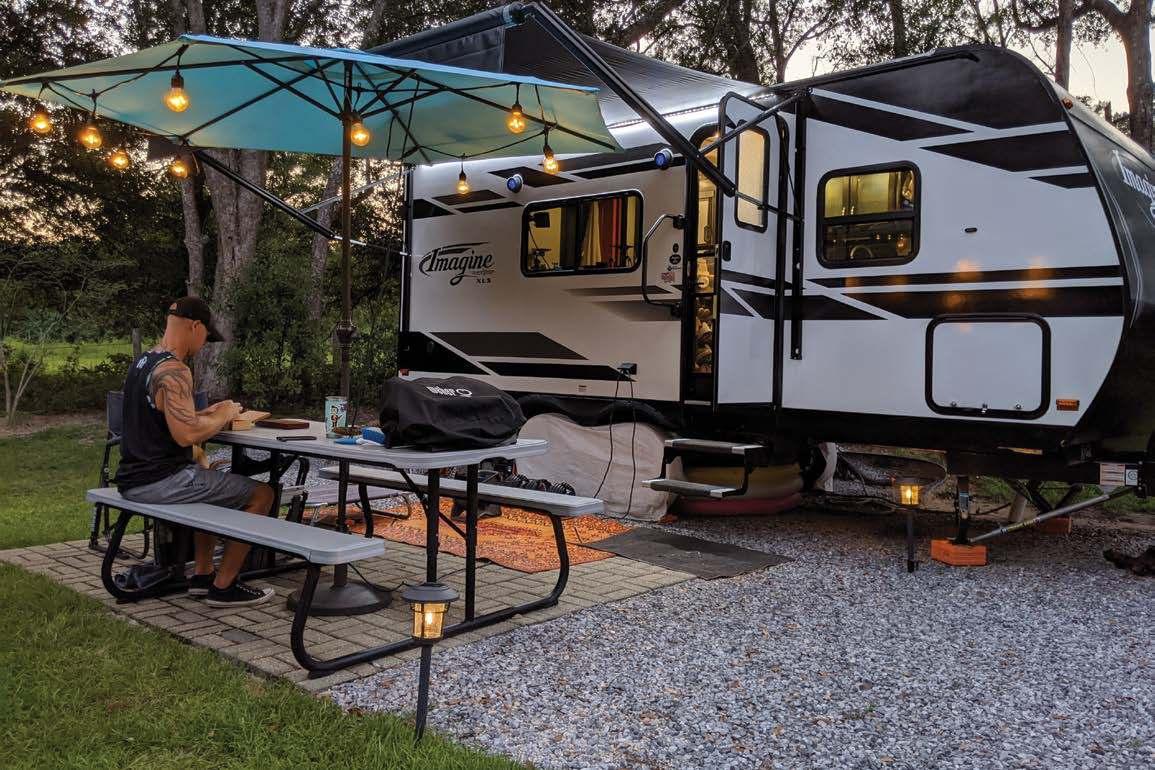

As has been the case for almost everyone, 2020 has been a different year. Due to the circumstances, festivals were canceled, plans fell through, and routes were no longer passable.Wedecidedtoslowdownandhavebeenstationary for the longest period since we set off, in the same state that matches our license plates. This time has given us the opportunity to pivot, to work on our digital presence, expand our website, and network through social media. We both miss the shows, the hustle, the feeling of fulfillment, human interaction, the buzz of a new city. We believe so strongly that humanity's most important value is CONNECTION. And that is especially true with art. Meeting the people who bring pieces of our art into their lives is just as important as making the sale. We're adapting, evolving, growing every day to keep up with this ever-changing world.
Follow Crystal & Caleb’s travel adventures on Instagram @the_renegade_ramblers and grab a piece of your own from Caleb at CalebBarnabyDesigns.com or on Facebook @CalebBarnabyDesigns.
CALEB BARNABY DESIGNS | ROOTLESS LIVING | 35

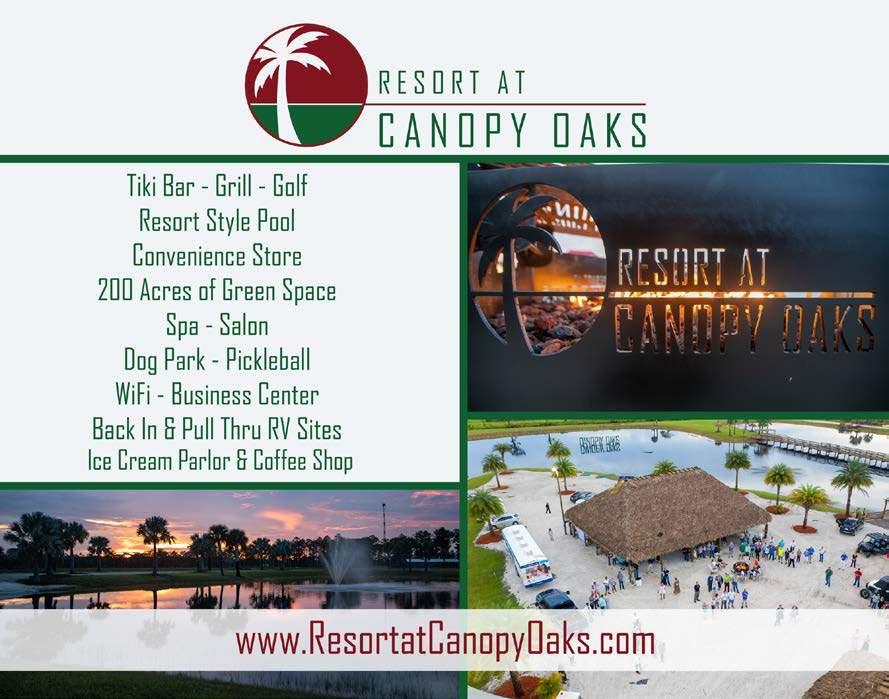
36 | ROOTLESS LIVING Featuring your favorite resort style amenities and beautiful scenery near all the Florida festivities like Disney, Tampa, Vero Beach and much more! RESORT AT CANOPY OAKS NOW TAKING RESERVATIONS WINTER RATES STARTING AT $899.00 Opening December 2020 FLORIDA ' S NEWEST LUXURY RV RESORT 16950 COUNTY ROAD 630 LAKE WALES, FLORIDA 33898
ADVENTURES IN WORKAMPING
By Diana Ditkof
When we first set off on the road, we weren’t totally sure where our income would come from. Alex had discovered workamping because of Amazon’s Camperforce, but that was our one and only planned job as we drove out of Milwaukee and onto the open road in 2016. Since then, workamping has morphed into a brilliant way to help us reduce our expenses and occasionally supplement income while traveling on the road full-time.

But what exactly is workamping? It’s really all in the name - you work while you camp, yet that isn’t nearly detailed enough. Positions are temporary and seasonal, ranging anywhere from two weeks to several years. There are jobs for individuals, couples (whether that is significant others, siblings, or something else), and families with young and older children alike. You may find yourself fully running a campground, selling Christmas trees over the holidays, working the fall sugar beet harvest, guarding a very isolated gate, or sometimes simply being around to move a garden hose every few hours on someone’s private property….this was an actual job posting we saw and reasonably considered!
Workamping gigs almost always reward your hours of work with a free full hook up (FHU) site. Some will also compensate you for some or all of your hours with income, generally hovering near or slightly above the local minimum wage. One of the aspects that we preach is to look at how much a monthly FHU site is and
compare that amount to the hours they are requesting you to work. You don’t want to be taken advantage of, such as, if you’re working 160 hours per month for a site that normally goes for $500 over that same time period. And yes, we’ve seen that exact setup, where it legitimately feels like that campground owner is trying to take advantage of the flexibility of workamping to “pay” well below minimum wage.
There are many factors we take into account: the average area monthly rates, nearby attractions, local cost of living, and amenities that come along with the park. If we aren’t being paid, we aim for between 15 and 20 hours per week between the two of us total for relatively light work in exchange for a FHU site. I think that’s a good rule of thumb to stick to. The farther a job offer is from that work to FHU exchange, the more skeptical you should be.
Following that rule, workamping allows us to live in beautiful and fun places - like Napa Valley or Galveston Island - where monthly park rent can easily run between a thousand and fifteen hundred dollars per month. Keeping fewer number of hours committed to a campground also gives us the flexibility to seek employment at local establishments and gives us plenty of time to explore an area. Road life to us means freedom. Freedom to stay somewhere as long as we’re happy and freedom to leave when we’re ready. Workamping is the basis for how we accomplish that.
ROOTLESS LIVING | 37
We’re in agreement that our favorite job was at Bothe-Napa State Park in Calistoga, California. A typical day for us was setting out incoming camper tags, cleaning the yurts for the next guests, being around to sell firewood, and answering questions about the local area. Note that “setting out tags” was mostly driving around in a golf cart, “cleaning yurts” was a quick sweep and sanitization of a glorified tent, and “selling firewood” was having our own campfire while chatting with folks who bought firewood.
The job averaged 20-25 hours per week, combined between the two of us, of light work. No cleaning bathrooms, no flipping cabins, and minimal money handling. Most days were spent waiting for campers to come in while sitting under the trees in my hammock. The park itself was a dream to live in for a pair of Midwesterners and their pup: surrounded by redwood trees, Douglas firs, hiking trails, and a pleasant creek fed mostly by underground spring water. We often spent our afternoons with a charcuterie board and a bottle of wine that we purchased as a result of a wine tasting at one of the dozen vineyards surrounding the state park.

With the good also comes the bad. We’ve been really lucky and have had fantastic workamping experiences overall. We’ve also heard some horror stories of people arriving to find out there is no actual job, having to deal with bad management, or broken contracts. The best advice I could give someone beginning their workamping journey is to do

38 | ROOTLESS LIVING | WORKAMPING
your research. Take the time to read park reviews on multiple platforms, and ask lots of questions during your interview. I always write down questions I have prior to speaking to the park to make sure they are all answered via phone call or email before accepting a job. Not all workamping jobs are a good fit for everyone. Don’t feel you have to take every workamping job you're offered, and you won’t be offered every job you interview for. You want to make sure the position is going to be the best fit at the time for you. Sometimes it takes a little trial and error to find what fits your personal needs.
Whenwetookoffin2016forfull-timeroadlife,mybackground was in the restaurant industry while Alex had experience in remote tech support. While we have been able to use those skills on the road, we’ve worked everything from mom and pop campgrounds to corporate campgrounds, Amazon’s Camperforce, state and national parks, even seasonal gigs like selling Christmas trees, and we still feel like we’ve barely scratched the surface on jobs that are out there. That feels like the best part: we never stop advancing our skills and experiencing new things in new places, for exactly as long as we want. That’s how we define workamping and we can’t wait to keep exploring all the job options out there.
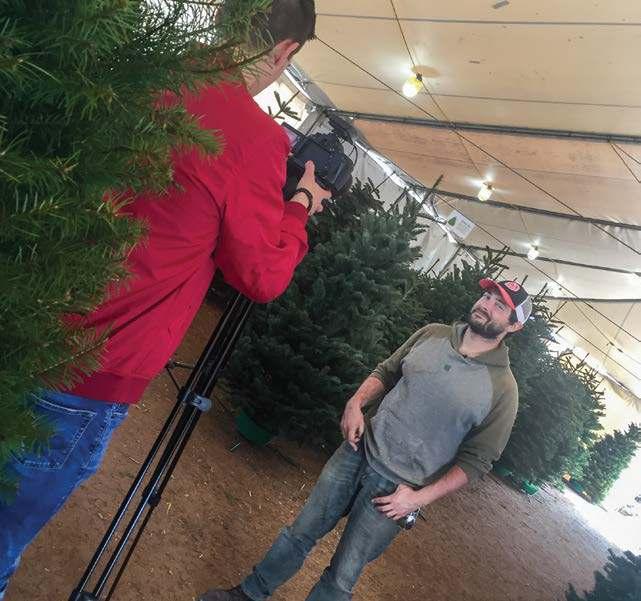





Follow Diana and Alex’s travels and get even more workamping insights on their Instagram @beerving_america.
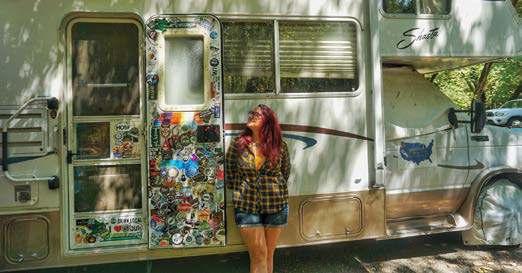

ARTICLE NAME | ROOTLESS LIVING | 39
• Maintenance Free • Patented TORSION-FLEX Technology • Reduces Chucking & Jerking • Absorbs Up To 90% Inertia • 100% Satisfaction Guaranteed OFFERED IN
MODELS genyhitch.com (574)218-6363 EXPERIENCE
SMOOTHER TOWING EXPERIENCE. EXPERIENCE A SMOOTHER TOWING EXPERIENCE.
FIFTH WHEEL KING PIN & GOOSENECK CONVERSION
A
ROOTLESSLIVING PODCAST



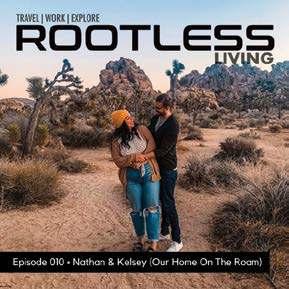
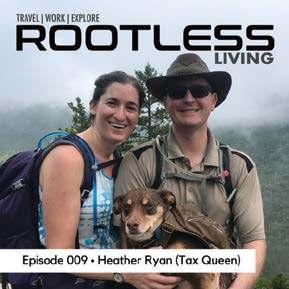




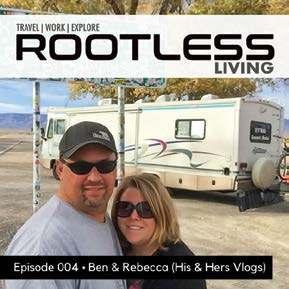

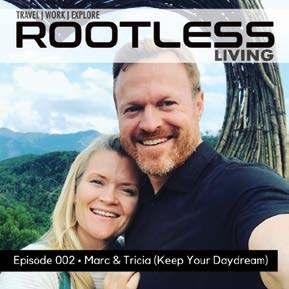


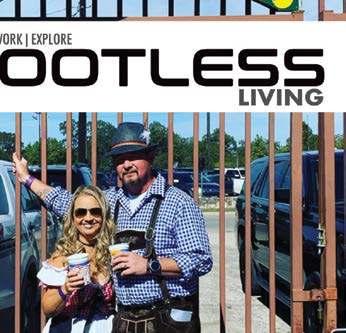
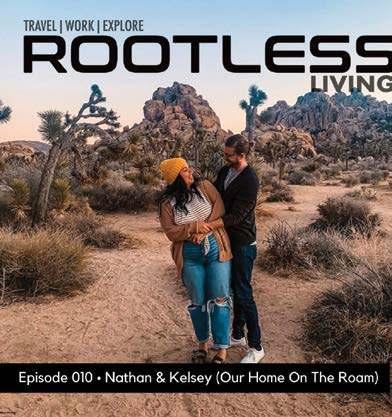
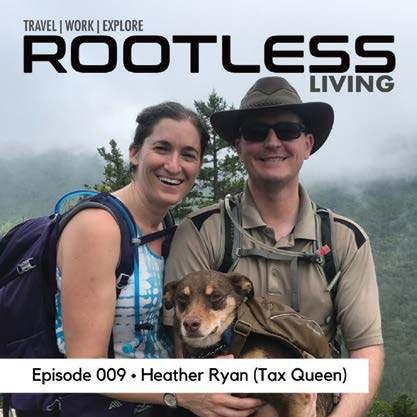





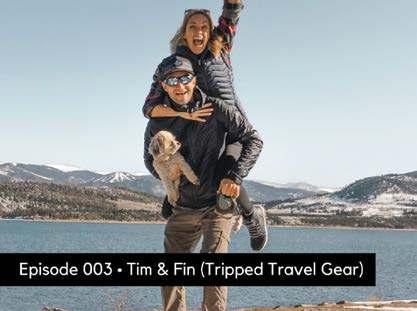

ARTICLE NAME
Listen to the Rootless Living Podcast on your favorite podcast player
Future Solutions Advanced Energy Solar Upfits
If you pull back the curtains on any successful business, the company behind it is usually solving a problem for their customers. The really good ones though are anticipating a solution before the customer ever sees the need coming.
Future Solutions is leading the way in custom solar designs with their high quality, complete solar packages for RVs, trucks, vans, skoolies, overlanders, food trucks, and more. In September we were able to tour their plants in Elkhart, Indiana and see first hand how their team of professional engineers and RV industry veterans are transforming the future of solar and off-grid living.
Future Solutions parent company, Future Sales got its start 20 years ago when founders Kelly Moyer and Tom Englebert left the large REP agency they were working for to create their
own, more specialized agency. Like most entrepreneurs, they enjoyed their jobs but knew there was a better way which didn’t involve all the corporate politics.
An OEM, or Original Equipment Manufacturer, are the big RV Manufacturers like Grand Design and Thor who are building and manufacturing RV’s. An agency, like Future Sales, represents the parts and supply brands to those manufacturers. Tom and Kelly enjoyed networking and building relationships with customers, so starting their own agency which allowed more time to focus on specific brands and customers was very appealing.
And just like any great brand, Future Sales started with humble beginnings. They first set up shop in January 2001 in a friends warehouse, paying rent by cleaning it. The warehouse had no electricity or running water. Because they needed their fax machine to take orders, they figured out the electricity aspect but they never did get that water running.

In June of 2001 they were officially incorporated and a few months later, on September 11, 2001 Tom was out getting his payroll set up for the first time when the attacks of 9/11 happened. Naturally they were devastated and worried about the economic toll, would they be out of business just as they got up and running?
As people stopped flying however, the opposite happened. Much like we are seeing happen today in the RV industry, families drew closer and took back to camping and RVing for their vacations. Future Sales business began to grow. They outgrew their original warehouse and expanded to the location across the street from where Future Solutions newest plant is located today. They added onto that plant twice and when they again ran out of space, they acquired another plant and started doing some manufacturing themselves.
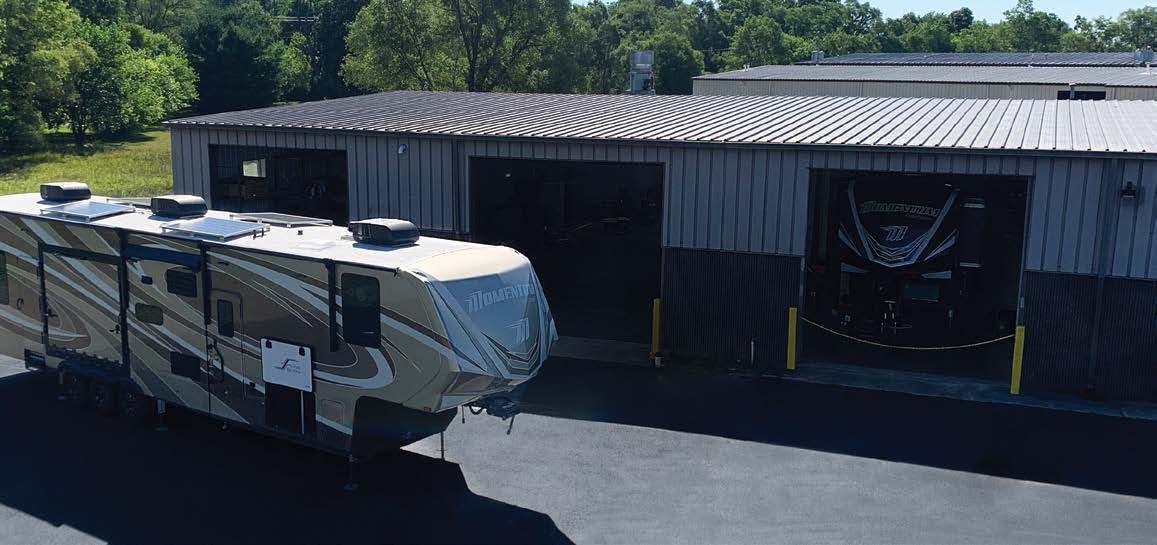
ROOTLESS LIVING | 41
Future Sales office circa 2001
Future Sales didn’t want to just supply parts, they wanted to create solutions for their customers. While there might be many reps selling an individual part, they set themselves apart. They focused their product lines specific to energy conversion and manufacturing but also began taking on the fabrication and assembly of the larger parts including subassembly and metalwork done in house.
When the economy took another hit in 2008-09, Tom & Kelly stopped taking a salary and kept their team employed for as long as possible. When they had to cut back, they brought back every single employee as soon as they could and today they are continuing to expand.
As their fabrication and customer solution business began to grow, they brought on Josh Atwood to lead their Engineering and product development. Originally, Josh was brought on to help drive the advanced energy initiative among the brands they represented and was assigned a team. John Tennant who was leading the Future Sales service department and his technician Nate Sorrentino. When Grand Design came to them with a request to upfit Hoonigan driver Ken Blocks’
personal and media trailer with solar, they quickly realized an emerging need in the market and got to work moving the business into custom solar upfits. Soon after Future Solutions was born.


Much in the same way Future Sales got its humble beginnings, so did Future Solutions. Everyone on the team arrived at just the right time and with exactly the right skills the team needed. John came from years of working on the electrical and engineering teams of some of the area's largest RV manufacturers. When he moved into the role of application engineer, Nate Sorrentino took over leading customer service. They knew they would need a marketing team next and when Courtney Harris heard, she walked over from the assembly side and let them know she was ready with her fresh marketing degree.
Josh & John identified all the best products and brands in the industry which led them to structure their systems and build out designs custom to each rig and customer’s needs with the best products on the market. As customers began calling, the team created a tier system to their upfits with each tier

42 | ROOTLESS LIVING | FUTURE SOLUTIONS
Future Sales warehouse circa 2001
designed to grow with the customers needs and budgets. If your budget only allows for a few batteries and panels right now but you plan to upgrade in the future, Future Solutions will even design and spec out your vehicle for the full package design. This is great for when you are ready to upgrade, the system is designed and prepared accordingly.

A tier one package is a smaller setup which might include two batteries, a solar panel, and 2000 watt inverter. The tier two package includes a 3000 watt inverter and a couple more batteries and panels. Then as you move into the larger tier three, you’ll be getting something like 1200 watts of solar on the roof, six batteries and a 3000 watt inverter.


From there they can go even bigger, building out your dream off-grid solution. Their approach is simple, understand the customer & set expectations. In an introductory call, they get an idea of how you are living now in your RV and how you’d like to live with solar. They gather details on what your power usages are, what small and major appliances you use currently and how often. This process helps the team put
together a system designed to your needs and can adjust the system design based on your budgetary plans.
From weekenders who want to go full-time to those who have never RVed a day in their life, Future Solutions is helping customers identify what it is they really want and how it fits within their budget.
If you are a solar novice like we were, when you start an inquiry with Future Solutions, their team does a great job of educating you in easy to understand language. Trust us, if we can understand it, you can too. The process starts on their website where you can complete an online inquiry form, inputting all your typical appliances and power usages as well as what you’d like to achieve. From there John will break it all down for you on a call so you can understand what’s truly possible for your RV and your future off-grid life.
For more information on how Future Solutions can get you off-grid, check out their website or start an inquiry today at fsi-solutions.com.
ROOTLESS LIVING | 43
A NEW JOURNEY BEGINS
Just like every great road trip, sometimes life takes you in a new direction. At Heartland, we’ve launched a new journey to make our RVs better than ever. We’ve doubled down on seeking out the highest quality materials, creating fresh and inviting interiors and giving every unit the kinds of finishing touches you’d find in a new home.
Every unit goes through a top-to-tails inspection with a quality assurance expert—in fact, we have an 89,000-square-foot facility dedicated to walking each RV through a series of checklists to ensure it works exactly as it should. And with updated floor plans incorporating features our customers love best—spacious bathrooms, designer kitchens, furniture meant for cuddling up together—we’re confident every trip in a Heartland will be a happy one.
After all, that’s what RVing is all about: hitting the road with people you love, having adventures, making memories. So when you buy a Heartland, just focus on taking the journey of a lifetime. We’ll take care of the rest.


Experience the all-new Heartland online and check out 360-degree model tours, detailed floor plans, all-new features, galleries of updated decor and more.
Just visit HeartlandRVs.com.
44 | ROOTLESS LIVING | ARTICLE NAME



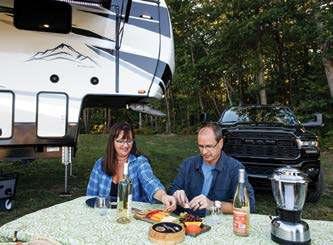
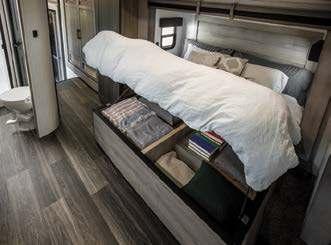
Driving Towards Financial Independence
Our journey likely began similarly to many others currently living the RV Lifestyle. Initially, what began as an evening dinner discussion later turned into a routine planning session. In the summer of 2018, we found ourselves at a crossroads with our time and what path our lives were on. Meredith’s schedule at work became pretty cumbersome with long hours and inconsistent times she would get off, creating the lack of work/life balance. Brett was working in Healthcare IT as a Team Manager creating additional stress and pressure as well. Simply put, this just wasn’t the life we had hoped for. At age 35, we wanted something else, we wanted more time together, and we needed a change.
Two summers prior, we purchased our first home together that was eight minutes from downtown Nashville. “We made it”, we told ourselves. Meredith had worked tirelessly to complete her Doctorate in Advanced Nursing Practice as a Certified Registered Nurse Anesthetist. For those who might not know what a CRNA is, it is someone who manages your airway during a variety of surgical procedures, all day every day. This degree, combined with her Bachelor’s in Nursing and a BS in Microbiology created a significant amount of student loan debt. To put it into perspective, the amount we would pay to these loans equaled the cost of an average mortgage payment.
The debt didn’t stop there. We had accumulated credit card debt, Brett had student loans remaining, two loans against our retirement, not to mention two mortgages on top of all of this. While the exact amount isn’t known, we estimated our debt to be close to $200,000 or more, not including the
By Brett and Meredith Shoemaker
mortgages. The weight of this debt was heavy, it was hard to see what our financial future looked like, and it put a strain on us both mentally and emotionally.
At the time, Brett worked remotely and had been a remote employee for more than seven years. When it came to Meredith’s job, we knew that travel nursing existed, but we didn’t know if such an option existed for Nurse Anesthetists (CRNA). After a few Google searches, we discovered that traveling CRNAs exist similarly as travel nurses. They work independently and can partner with a variety of Locums firms for assignments all across our country. What came next were a flurry of questions: Where would we live? Where would we go? What do we do with our home we just bought two years ago?
At first, we discussed living in and out of those short-term stay hotels that come fully furnished, but we quickly changed our minds on that. We’d spent some time watching HGTV’s Tiny House Hunters, Tiny Luxury, and many others related to tiny living. We were completely fascinated by the thought of living with the bare essentials, but more enamored by the thought of traveling and exploring new places.
Once we decided a home-on-wheels was the route for us, little did we realize how much went into deciding which brand, model, size, floorplan, and that’s the easy decision to make. After attending a couple of RV trade shows and shopping at different RV dealerships, we finally landed at a 42-foot Coachmen Chaparral fifth wheel. We knew we needed something large to accommodate us and our two big

46 | ROOTLESS LIVING
dogs and, as of today, we’ve added a third big dog to our tiny space.
Purchasing a truck to pull the RV proved to be our most difficult step in this process and nearly derailed our entire plans. Long story short, we purchased a truck that was deemed ‘unsafe’ for pulling our RV and had sunk $18,000 into a truck we couldn’t use. Committed to our journey, Meredith found another truck about 4 hours from Nashville that became the truck we should have bought first. So, if you are following along on the math here, that $200,000 is now north of $250,000. The debt kept climbing, but we knew RV’ing gave us the greatest chance to maximize our income while drastically decreasing our monthly expenses.
We officially hit the road on October 23, 2018. Now, we’d be remiss if we didn’t mention to any of you reading this that we had ZERO experience RVing. In fact, the guy who delivered our RV said, “pulling something so big for the first time will be quite the challenge for us”, but he failed to mention parking it was the real challenge. There’s a reason you’ve seen shirts, mugs, etc. that say, “sorry for what I said while parking the RV”. A hard lesson learned was arriving at our very first campground for Meredith’s first assignment at night. Talk about rookies. We couldn’t find our spot and once we did, we struggled for what felt like hours trying to park it.
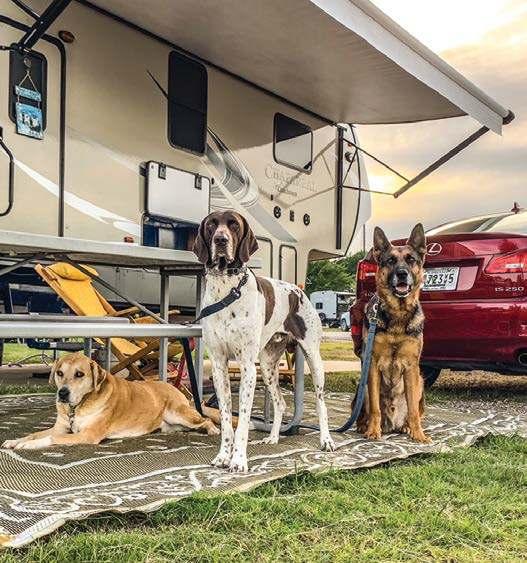
Once we settled in and worked out some minor kinks, like a clogged black tank in the middle of a Virginia winter, we began picking apart our debt, smallest to largest one-line item at a time. Admittedly, we struggled with a budget in the past, it wasn’t that we didn’t know how to do one, it was more or less finding the time and will power to do it. Once we started budgeting and watching our expenses, it became easier to understand which debt to attack first. Our debt payoff plans started off slowly, it took us about three months to knock out some of Brett’s old student loans, shortly after that our credit card debt and by June of 2019 we issued our largest debt payment yet. $24,000 paid in just that month alone.
The concept we focused on heavily was the Baby Step program from Dave Ramsey, but also a technique called, “Geoarbitrage”. Geoarbitrage essentially is having a High Cost of Living (HCOL) salary, but living in a Low Cost of Living (LCOL) area. We added our own flavor to this technique by maximizing Meredith’s earned income by becoming a 1099 employee and living in our RV as we traveled from place to place contract to contract.
With Dave Ramsey’s Baby Step plan, Geoarbitrage, and our home on wheels, we made it to the 12th month of our RV journey. We celebrated paying off $137,000 worth of student loans and credit card debt exactly 12 months after we started our RV debt free journey. Five months later we paid off the truck, four years EARLY. Another $30,000 worth of debt gone. Seventeen months into our RV journey and we’ve successfully paid off $167,000 of our total debt.

Then, the pandemic hit. After a couple of canceled contracts
and rapidly building up our savings, we bounced back and issued another loan payoff at the end of August 2020 totaling $9,300. As of today, we’ve paid off $179,363.51 of total debt in just 23 months’ time. Next month we celebrate our 2nd year “Nomadiversary” living our dream of spending more quality time together, exploring our country one state at a time, and building a more financially sound future for ourselves.
August of 2020 was intended to be our full debt payoff month, but thanks to the pandemic we’ve had to delay that just a bit. While we haven’t hit our goal just yet and with only $63,805.56 of debt remaining, our debt freedom is right around the corner and we owe everything to our RV Journey.
Thanks for reading and following along! You can learn more about us at drivingtowardsfire.com or follow our journey on Instagram @drivingtowardsfire, and tune in to our podcast “Driving Towards FIRE – Alternative Lifestyles for FI”.
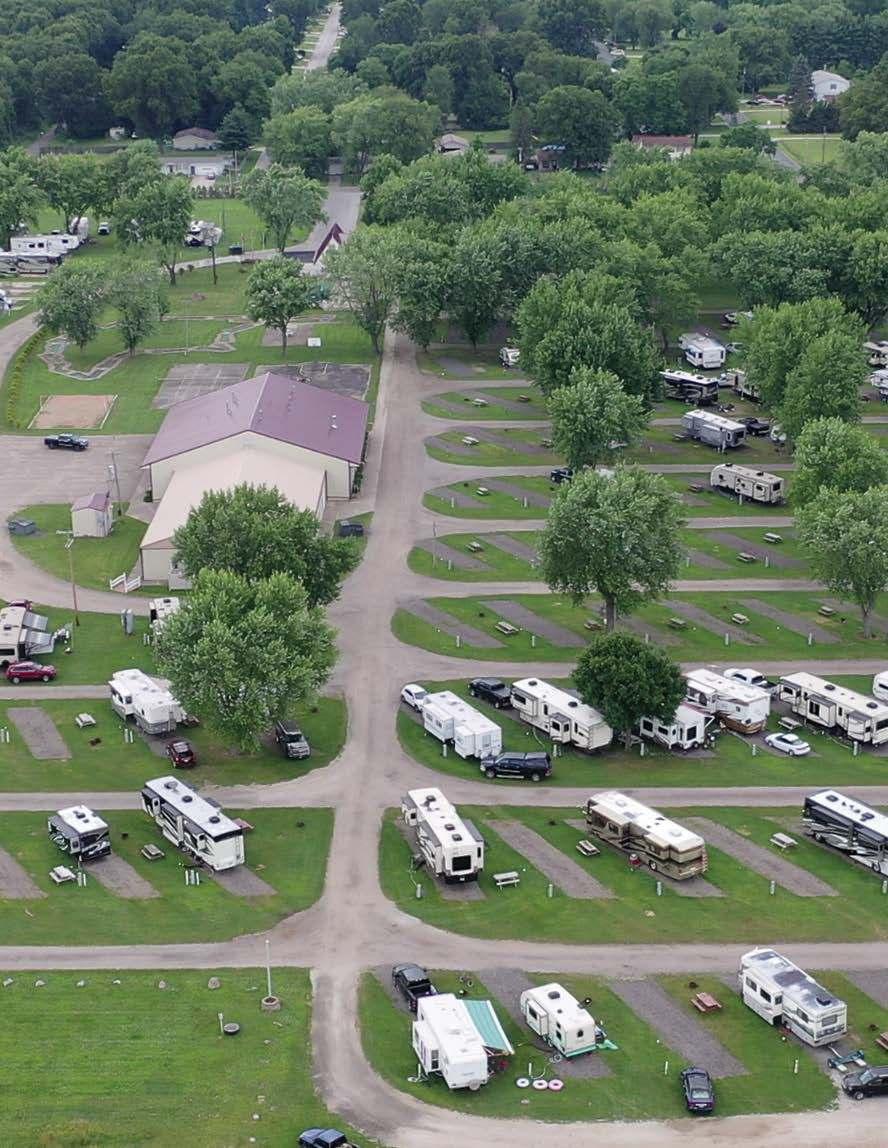





Located in the “RV Capital of the World” 25 Acres Pull-Through Level Sites Full Hook-ups Dump Station Laundry Swimming Pool Playground Large Dog Park Mini Golf Course Pickleball Basketball Court Walking Trail Cabins 25608 County Road 4 East Elkhart, IN 46514 (574) 264-2914 GPS N 41.7351 W 85.9588 Located close to all Major Manufactures, Dealers & Service Centers. OPEN Mar 15 - Nov 15 www.ElkhartCampground.com ELKHART CAMPGROUND
Weekend Warriors
By Sarah Howard
Inayearfilledwithasurplusofchallenges,weweregiven an unexpected opportunity. As our corporate offices sent us home to work and virtual meetings became the new normal, we have more time to travel and work from the RV. It took us a minute to put it all together, but we are now fully embracing the possibilities.


We are weekend warriors with corporate jobs during the week and travel on the weekends. We are both in the hospitality industry. I work in our corporate accounting department, buried in numbers, spreadsheets, and forecasts. I cannot tell a lie... I usually love it. My husband works for a major food distributor, consulting with restaurants on best practices. He is currently supporting restaurants as they work through the struggles of the pandemic. He has a passion for this industry that really shines through when he is working with his customers.
This year has hit our industries extremely hard, but we are both hopeful we will make it through to the other side. The positive take from it all has been as remote working became mandatory, we have been able to travel a little more and take longer weekends, all while working from the RV. Without this forced push to remote working, I don’t think my company would have realized how well it works. It is unlikely we will remain 100% remote in the future, but this is a new experience and I hope the flexibility will continue into 2021 and beyond. It has certainly changed our thinking and planning.
As much as we enjoy our careers, we love our weekend
adventures. They allow us time to get away from the stresses of life, time to connect with each other, and time to explore. It reminds us to live our lives. And of course, we can bring our two furry friends, Bingley and Stella. Now that we are able to work remotely, we leave the house earlier and stay longer at each destination. We visit places a little further away since we are not limited to a strict weekend timeline. Even though we are still working during the day, the view is significantly better and puts us that much closer to the next hike or kayaking trip. We no longer run out the door on Friday evening to start our travels which allows us to enjoy Friday night at the campsite.
As weekend warriors, a benefit of exploring Florida is the diversity. Even though we usually do not travel far distances, we have an endless variety of places to visit. We have the famous white sand beaches, historic forts, lighthouses, gorgeous crystal-clear blue springs, and so much more. My husband often reminds me that every place we visit cannot be my favorite, but truthfully there is something unique everywhere we go that makes it feel exciting and often inspires the next adventure.
Manatee Springs State Park was the first state park we stayed with the RV. It was the first time we experienced the crystal-clear brilliant blue springs in Florida and as a bonus, we saw manatees. It was also the park we learned about the underground cave system when we saw divers surfacing. This trip inspired us to take every opportunity to visit the springs all over Florida. We especially love to explore the clear water of the springs in the kayaks. Along with manatees, we have seen alligators, fish, birds, boiling sand, and colors in the springs so brilliant that it almost seems impossible they are natural creations.
Another location that has quickly become our go-to favorite is Anastasia State Park because of everything the area has to offer in one trip. The park is beautiful, right on the Atlantic Ocean and a quick ten-minute drive to historic downtown St Augustine. We have spent time on the beach, explored the farmers market, saw our favorite bands play at the adjacent amphitheater, climbed up to the top of the lighthouse, and explored all of the historic sites. My favorite trip was during the holidays when the whole downtown is decorated with sparkly holiday lights. We ate at an award-winning restaurant that left a memory on my tastebuds that I am not likely to ever forget. This area is truly magical.
We also enjoy visiting places that represent the “real” Florida and are further away from the hustle and bustle. When we stayed at Fort DeSoto County Park, we were reminded why Florida is known for its picture-perfect white-sand beaches. We were able to explore the fort, relax in the calming Gulf waters, and found our love of kayaking. At Tomoka State Park, I felt like we were camping, not glamping. It has a rough, heading out to the woods feel with all the conveniences of every other state park. We explored the park, kayaked in the calm river waters, drank a locally brewed beer from the general store, and enjoyed campfire dinners with friends.
The real Florida state parks encourage us to explore places off the beaten path because we always find hidden treasures. If we had not stayed “in the middle of nowhere” at O’leno State Park, we would have missed a gorgeous suspension bridge or seeing where the Santa Fe River goes underground and surfaces three miles down the road. This is a really cool phenomenon, but a bit of a bummer for kayakers wanting to travel the entire river.




WEEKEND WARRIORS | ROOTLESS LIVING | 51
We have explored more of Florida in the last year than we had the last ten years of living in the state. The recent added flexibility has allowed us to get out more than ever. We’ve found the change of scenery helped us deal with the emotional toll of this year. I do not know if we will ever become full-timers, but we sure do love exploring the world in our RV every chance we are given.

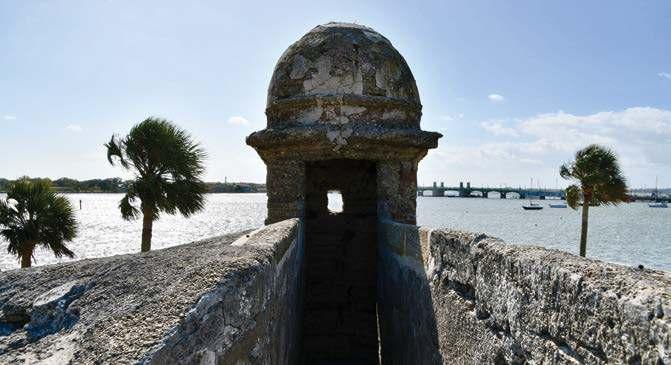
About the Authors: We are Sarah and Matt. We are working hard and doing our best to enjoy life and explore as much as possible. We hope our adventure will inspire others. You can follow our adventures on Instagram or Facebook @rv_travel_adventures. To read our blogs, campground reviews, and view our photo gallery check out our website at rvtraveladventures.com.

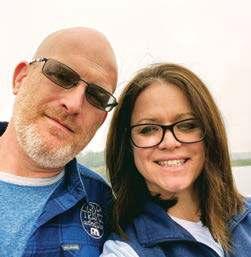
Freedom to GO and Freedom to STOP

 By Jessica Kaiser
By Jessica Kaiser
If you’ve traveled full-time or are currently doing so, the question has probably crossed your mind, “what would it be like to go back to stationary life?” Everyone said adjusting to full-time travel would be rough, but no one said adjusting to stationary life after travel would be hard too.

Our story starts while making the two and a half hour trek to the Iowa State Fair for our 6th wedding anniversary. Blaine decided he had reached his full potential in his position and was feeling over-worked and under-appreciated, so he made the conclusion it was time for a change. He didn’t know which direction he wanted to go with his career, so he decided to start dreaming - do I need to have a job? How can I make traveling my “job”? On that road trip, Blaine dropped the bombshell - he had been doing research on how others had quit their jobs and lived on the road in a camper. Me being the dreamer and he the realist of our relationship, I was shocked, to say the least.
After some soul searching and researching our options, I decided Blaine wasn’t as much of a wackadoodle as I’d thought. So, we decided to pursue this adventure. We spent the next year doing a lot of research, purchased the first vintage trailer we looked at, renovated said trailer, bought a new tow vehicle, sold most of our possessions, as well as our house, and quit our jobs. We were unemployed and homeless, with the freedom from responsibility and

ROOTLESS LIVING | 53
obligations to anyone but ourselves and our hefty pup.
We spent the next year exploring 31 national parks and 31 states. It was truly the time of our lives with the freedom of having no strings attached. We made new friends, explored all the breweries we could find and just lived. We experienced this life of the unordinary, exploration, uncertainty, tiredness, and beauty. It was hard, but there were days that made it worth it. Those good days were SO good. The perfect days were the ones with beautiful weather and scenery that blew us away. Things that were unlike anything we’ve ever seen before, maybe something we didn’t even expect to see. Places to hike, to touch and smell the outdoors and to really experience the area, not just see it.

The days where everything lined up; a place to stay that didn’t cost a fortune, where we didn’t have to worry about whether Dodger could come with us. When we met new people, who were so kind and took us in, we swapped stories and just hit it off with them. There were only a handful of those perfect days, but they happened.

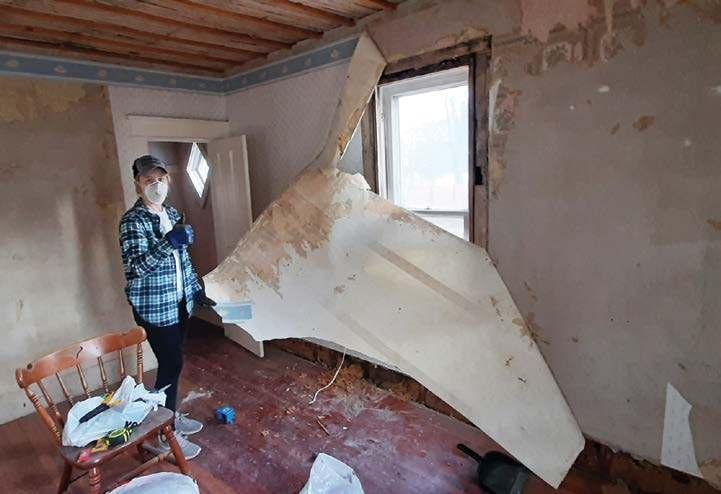
There were so many other moments that just felt so good to be together, in a beautiful place, that nothing could ever replace this moment, no matter what the rest of the day held. The beach at Redwoods, our campsites in Sequoia, Joshua Tree and Big Bend. Sunsets in Utah. The yard in Tacoma. Easter in DC. The lake at Petit Jean. The pier in San Diego. The stingray swimming beneath our feet in South Padre. The brewery in Memphis. Riding scooters in DC. Facing our fears in Zion. Lakes in Glacier. Starfish and hidden beaches in Oregon.
We were happy 90% of the time, and the other 10% emotionally heavy. Things that really weighed us down like the weather; scorching hot, freezing cold, high winds, all-day rains. Taking the time to work vs. not working and filling time. Campsite costs. Battery life. Broken water pumps. Illness. Dirty dishes. Lack of space. Leaving our poor dog. Rough roads. Unfriendly people. Camper leaks. Gas costs. Food storage. Noisy parking lots. Feeling unsafe. Bears. Time. Communication. Long travel days.
Near the end of our year-long adventure, that 10% started to overshadow the good and we decided to temporarily stop and take a breather (plus, make more money). What started as a Labor Day trip to see our families turned into staying stationary for the winter. Ultimately, we were exhausted from the lack of amenities that our trailer couldn’t give us, it was time to reevaluate our priorities.
We’vebeenhomeforayeargivingustimetoreflectonourexperience. Don’t get us wrong, those good days I talked about earlier, they exist here in stationary life too. We’re renovating an old house in the town we grew up in, just a block down the street from our nieces. We’ve gotten to enjoy events and make memories with our family and friends that we would’ve otherwise missed while on the road. We’ve also found beauty in our new yard, the days with great weather and the giant, old trees surrounding our property. Dodger loves having a lawn to run in and we love being able to give him that safe space.

While we love being able to enjoy the people and things we didn’t have while on the road, we can’t help but miss everything that made traveling so great. Is this a “the grass is always greener” situation? Our experiences have taught us so much about life and each other, we will always carry those lessons with us. If anything, we’ve learned to live in the moment and be thankful for what we have. We don’t know what the rest of our story is, only God does, and we can’t wait to see what adventure He has in store for us.
About the Author: Blaine, Jessica and Dodger spent a year on the road traveling in their vintage trailer they lovingly called Rosita. They now live in small-town Nebraska after transitioning into stationary life. Jessica is a graphic designer and photographer while Blaine sells flooring at their hometown furniture store. They spend most of their downtime renovating their 112-year-old house, enjoying time with family, and dreaming of someday traveling again. Follow them on their journey on Instagram @engrained.nebraskans.
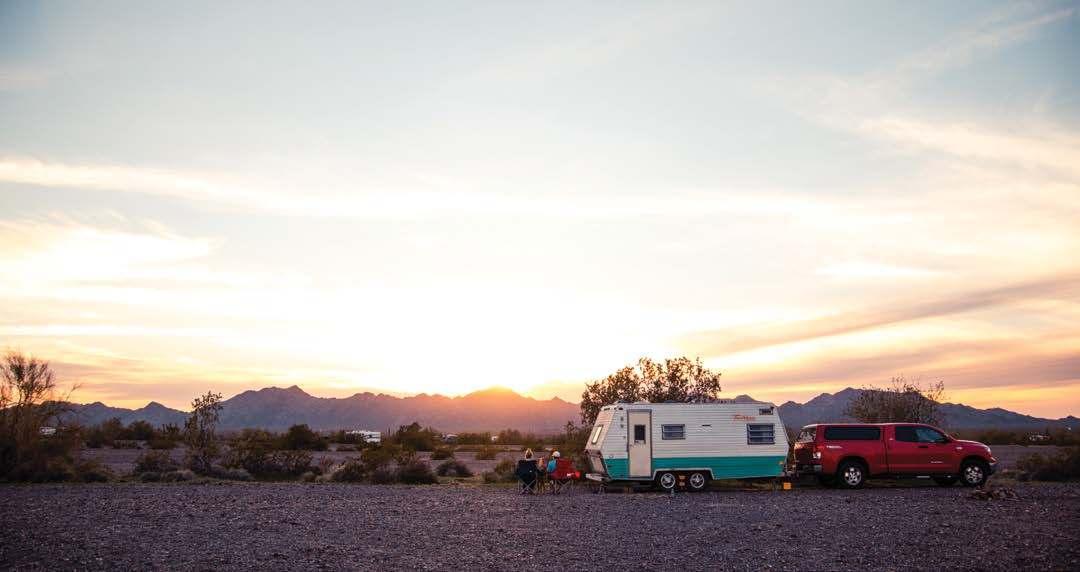
FREEDOM TO GO | ROOTLESS LIVING | 55
When The Numbers Add Up
Just Right
By Jamie Stovall
1+2+11+5+30+5,735=1 Epic Vacation
Just add 1 global pandemic, 2 RVs, 11 people, 5 National Parks, 30 days and 5,735 miles and you will get 1 EPIC VACATION!
We’re a big homeschooling family with nine kids. My husband and I loved camping when we got married and couldn’t wait to share it with kids one day. Our family grew and, in the early days, we took a lot of trips to Georgia State Parks because it was the only way we could afford vacations with one income and lots of little ones. Our kids fell in love and it became the one activity we ALL enjoyed, sleeping with stars overhead and the ground beneath us.
In 2017, we took our first out-of-state adventure to Yellowstone and Grand Teton National Parks and got to watch a solar eclipse from the banks of Jackson Lake. We packed everything we needed into our 12-passenger van for the adventure of a lifetime, and it did not disappoint. However, the two things that were slightly annoying to us were unpacking and packing EVERYTHING every stop, and sleeping on the ground at 40 years old. We decided it was time to switch to RV camping. We finally got around to doing so this year.
We have three girls and six boys, in that order, ages 18, 17, 16, 14, 13, 12, 10, 9, and 7. When we started shopping at local RV shows and online there weren’t any options that worked. We had to think outside the box. We wanted small enough to fit in National Park sites but also big enough to keep from killing each other before the end of our trips! We had our hearts set on the California National Parks and a visit with friends

for our first big trip, and we negotiated four weeks for my CFO husband to be away from the bank if he could operate remotely the 1st and 4th weeks of the trip. We needed enough room to make all of that work!
In the end, we settled on a 31-ft Class C, as old as our marriage, and a 2016 23-ft. travel trailer, to be pulled by our van. We would sleep the boys and us in the Class C and our girls in the trailer, shifting one of our girls to our rig and adding our three friends to the trailer when they joined us for a portion of the trip.
We purchased our RV’s in March, right when the pandemic
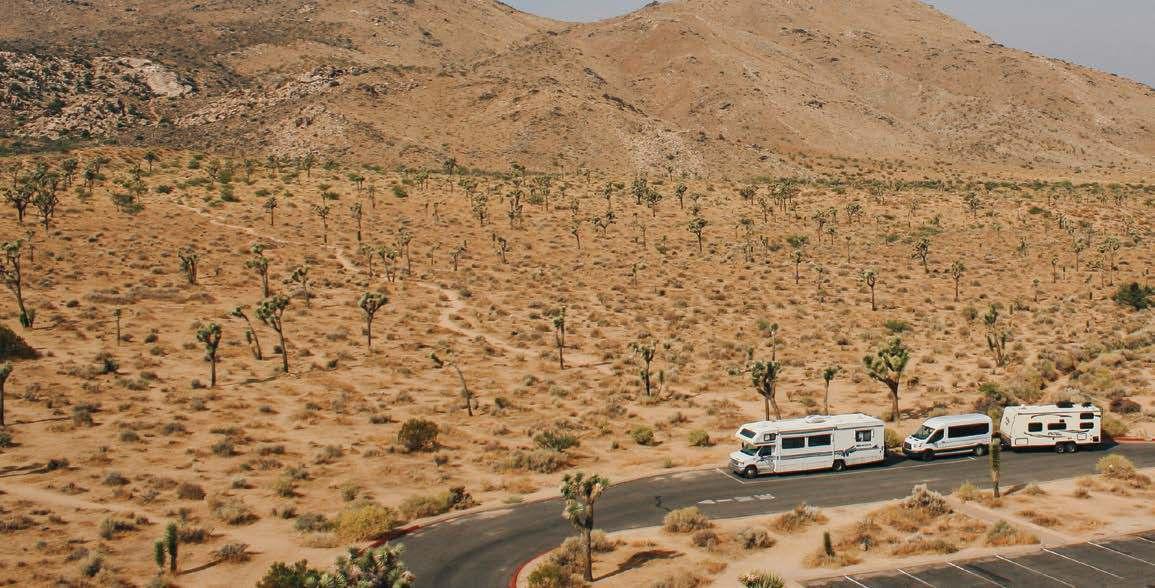
56 | ROOTLESS LIVING
started shutting things down in Georgia. Our Class C needed to be renovated. We replaced the jackknife sofa and fixed dinette with two-bed frames we built for our home, modifying them to create a mega couch the width of our slide with room for storage underneath. We built slatted extensions that pull out to increase our sleeping space. Four boys slept on the couch/bed with two boys in the cab bunk. While renovating, we also found water damage in the bedroom, so we gutted that room, repaired the back wall, and placed a full mattress on top of IKEA cube shelving to create enough clothing storage for the eight of us, with space underneath for our water tank and some extra storage.
Fortunately, the bathroom and kitchen functioned fine and only needed some aesthetic updates. We also spent those months watching various sources for updates on the virus, shut-downs, and restrictions, holding onto hope that our trip would happen. With our oldest just graduating, we knew it might be our last chance for this epic trip with all of us together. We settled on August 22nd-September 22nd for travels and made sure to make our day pass reservation to Yosemite, now required because of the virus.

We hit the road and took a little longer getting to CA because of some tire issues, but the hiccups actually led to some unique experiences on the road, like camping next to the astronomy buff with a high-resolution telescope that allowed our kids to see the rings on Saturn and three moons of Jupiter or stopping at Fort Lancaster in West Texas where we had stunning views of the night sky and the Milky Way that were more impressive than any night on our trip.

We arrived in Los Angeles late Friday night and reunited with our friends the next day. After they gave us a tour of LA, they joined us for our National Parks trip to Sequoia and Yosemite, where smoke from the wildfires seemed to chase us. Even still, it was magical. We hugged giant trees, walked across a dam and through an old railroad tunnel, splashed in swimming holes and waterfalls, saw bears, and hiked to scenic vistas, and each night, returned to our RV’s, pulled food out of the fridge to prepare, and slept on beds. It was dreamy!
Just before leaving Yosemite, the city’s power was shut off as a safety precaution, and one day after leaving, the National Parks were shut down. We just barely got our visit in before

the danger from the wildfires became too much, and having our rigs made it quick and easy to pack up and go. We headed west to drive over the Golden Gate Bridge, a bucket list item for one of my sons. He walked into the RV the night we arrived after stepping out to see the bridge with tears on his face, saying “Mom, I have literal tears of joy rolling down my cheeks.” We boondocked at the rest area on the south side of the bridge and he woke up to it just outside his window the next morning and walked across it and back. We discovered it is its own National Park, so we were able to add it to our count!

The wildfires changed our plans to drive down the Pacific Coast Highway and camp at a beach site, so we went inland to Santa Barbara and visited a quaint little Danish town nearby called Solvang. Then we headed back to LA to drop off our friends, visit the Santa Monica Pier, and celebrate our friend’s birthday on a beach in Malibu before leaving. We crossed the California desert to stop by Joshua Tree National Park on our way home, where we delighted in the night sky and returned the next morning for some bouldering. Then we headed to Arizona to surprise the kids with a stop by the Grand Canyon for the afternoon.
Mountains, forests, beaches, windy roads, deserts, and cities...I couldn’t pick a favorite part of this trip if I tried! We may have met numerous challenges along the way, but none of those added up to be greater than the highlights of our journey. We’re happy to be home, but I’m already daydreaming about the next one.
About the Author:
Jamie Stovall is a former educator turned homeschool mom of nine who is married to her high school sweetheart. When she can find spare time, she likes to read, craft, and spend time in nature. She's an extroverted introvert who loves a good story.
Coping with Grief

Ihave always loved traveling and discovering new places. I love to explore other cultures and learning new languages. But the way I travel has changed. I used to travel alone with my backpack, living in hostels, working as a volunteer and flying from place to place. Now I live the vanlife.
My love for vanlife started way back in my childhood. I feel like there are two specific childhood memories that may have started my passion for vanlife, way before I even realized what vanlife was.
The first memory is my mum, my dad, and me going on camping trips every summer. Not in a camping wagon like everyone else, but in my dad’s van. It was empty in the back, which made it possible to fit in a double sized sleeping mattress for my parents and a single one for me. We had a specially made tent that could fit on the side of the van and voila; we had our camping setup. It was simple but it was great. I only have happy memories from our trips in that van.
The second special memory is from when I was a little older, probably around 12 years old. My dad is an upholsterer and one day he had some costumers with a big 4 x 4 Range Rover with a roof top tent. They were going to drive all the way from Denmark to Asia and I was so amazed by that. When I grew older, the thought of getting my own van crossed my mind more and more.
Helped Me
By Cecilie Ballegaard Thuelund How Vanlife
But then in the beginning of 2017 my life was turned upside down; my mum got diagnosed with incurable pancreatic cancer. My mum was my best friend and had always been by my side through everything so it took a toll on me. I stopped studying for a Master’s in biology because I felt the right thing to do was to be with my mum and stay by her side through everything she now had to go through. It was my turn to be there for her. My mum was sick for 20 months and I stayed by her side through it all. We tried to enjoy and live life as much as possible and we traveled together several times and supported each other during this hard time.

ROOTLESS LIVING | 59
Going through all this at an age of 27 completely changed my mindset. I realized how vulnerable we are and that if you are dreaming about something you should just do it. What is the worst that can happen, right?
In October 2018 she passed away. My life stopped.

It was very hard on me. I was lost. I ran away from it all by traveling for several months but it followed me. I realized I had to deal with it. Grief. Here in 2020 I am still trying to figure out who I am after everything that happened, what do I want in life? How do I want to live my life? All these big questions fill my thoughts.

To be able to answer these questions I try to listen to myself and one day I realized I needed to feel free in order to figure it all out. And what better way to feel free than to have a van that is both your home on wheels and can take you anywhere you want to go.
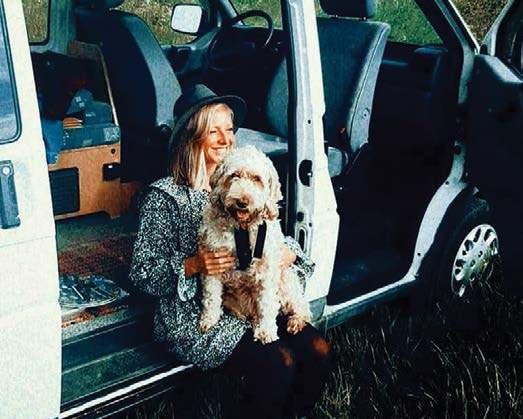
So, I started searching for a van. In May 2020 I found the perfect van for me. She is a white Volkswagen T4 from 1995 with a pop-up roof. She had a kitchen setup in the back when I bought her but I did not like it so I decided to renovate her myself and transform her into the van I have been dreaming about.
Before I started renovating, I went on several adventures – I simply could not wait. I spent the first month and a half enjoying her, getting to know her and I had the time to figure out how I wanted her to look and what I wanted to change.
I have traveled most of Denmark, Scandinavia, during these last months. It has been amazing to get to know my own country so well. There are so many hidden gems that I have
never heard about and Denmark really has a lot to offer. It is also very easy to find great places to park, for example near the ocean since Denmark has 8,750 km of coastline. It has been a great summer full of adventure and happiness for me, my boyfriend and our dog, Maggie.
Now in late July I finally started renovating her. I have painted the kitchen area petrol blue, changed the tabletop, made a new dinner table and put colorful wallpaper on the cabinet doors. I have changed the floor, given her curtains, taken out the toilet, because we would like the extra space and changed the fabrics on the seating area. I have painted the fridge with magnet paint, painted the ceiling with chalk paint and now it is time to make her cozy and homie with shelves, plants and all the small things. I love doing the interior. When the winter comes, I want to paint her orange on the outside from the windows and down.
VANLIFE IS 100% FREEDOM
Vanlife is a whole lifestyle and it is much more than just pretty pictures on Instagram. You get very attached to your van; it becomes a part of the family. It has its positives and negatives like everything else. It is not cheap to buy the van and there are many expenses combined with owning a van at least here in Denmark.
But the positives outweigh the negatives so fast that there are no excuses to not go get a van and start living the vanlife if you are dreaming about it. It is a cheap way of traveling; you are very flexible which means that you can go wherever you want to and pick up and leave whenever you want to. You have everything you need with you; kitchen, bed and your closet. You get to enjoy the scenery while driving and are able to stop and take in the nature or make a detour if you
suddenly find yourself somewhere beautiful.
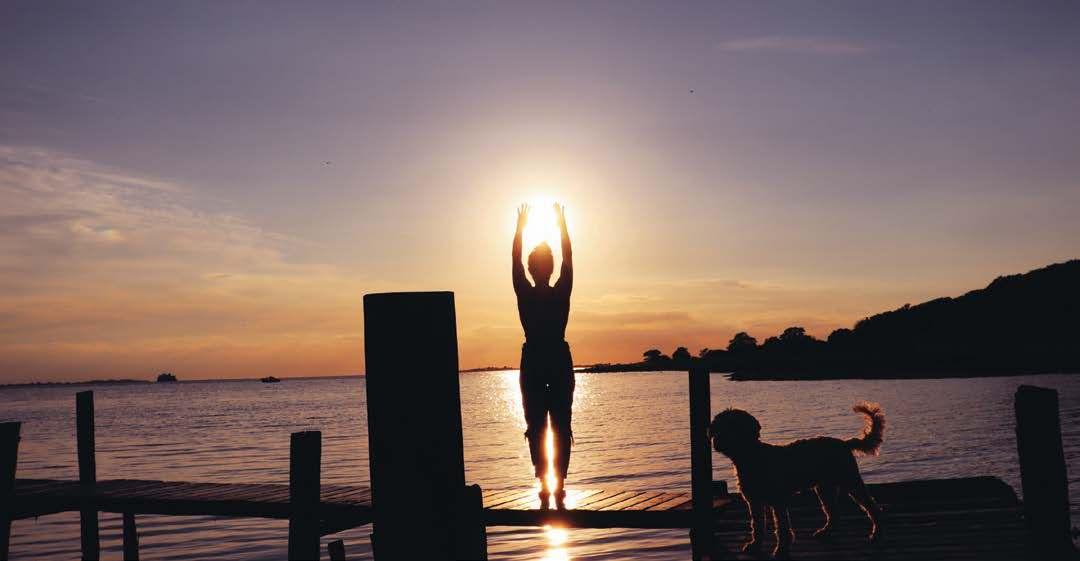
The most important thing I want to say with this story is that you should follow your heart, go for your dreams and reach for the Moon. Always. If life is hard on you, try to stop and feel what you really want. Listen well and do it. I am still struggling a lot with the loss of my mum but vanlife has really helped me and calms me down in a way that nothing else can. My van is my safe place.
Follow Cecilie in her vanlife travels on Instagram @fuddethevan.
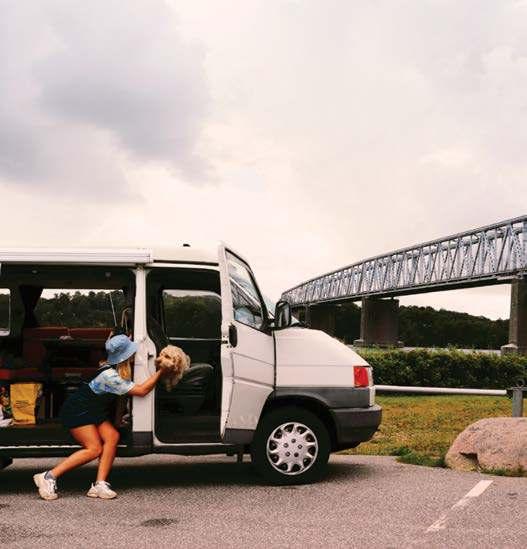
COPING WITH GRIEF | ROOTLESS LIVING | 61

Boondocking Is ...

... A Beautiful Reward
By Magda Nogas
We’ve been full-timers for over a year now and as we’ve got the gist of it, we can now say we prefer dry-camping aka boondocking vs staying at campgrounds. There isn't just one reason why we choose this type of lifestyle. I feel like the reasons we prefer wild, open spaces instead of campgrounds are the same reasons we left our bricks and sticks home. It's not that we don't like the comforts of full-hookups or reliable internet connection, it's more than that.
Perhaps it's the challenge of it all. Those who prefer boondocking will agree, it comes with its own set of challenges. It also comes with a lot of rewards: the wild nature, no limits of how loud you can be (when no neighbors around of course), you can jump naked into a pool of water, your kids can explore without being told to not step on the neighbor’s patch of grass.
Each state varies, of course, in its landscapes, regulations, laws, and availability to boondock. Central to the northern East Coast you will be lucky to find any. But the states which are more inland and, in the West, you will find all types of boondocking. The size of your rig can be the determining factor on where you can get to and about 80% of all boondocking requires you to go down some form of dirt road. Our motorhome is 29-ft long and for the most part we haven't had issues getting places. When it comes to the internet, we have to be very mindful of that for work as it's what makes this lifestyle possible. The Internet has been the biggest limitation to where we can stay, even

with antennas, boosters, and all the gadgets, if there is no reception, not a whole lot can be done on our end.
When it comes to resources, we predominantly use Campendium, or iOverlander, we find them the most user friendly with the best spot on descriptions from others who have visited. People share photos and tips you need to know prior to heading there, including the internet strength. We found ourselves in a situation in the beginning of our boondocking journey where checking the location on the map would have also been helpful to give you a better idea of the terrain.
Sometimes, if the location is rather hard to get to we would first go check it out with the jeep before putting our old motorhome through some strenuous drive which might end up being pointless if, for whatever reason, the spot is a no go. We had situations where we learned that lesson. Once in Colorado where the road was super steep and we barely made it to the top, or in Florida where we needed to reserve a spot prior to arrival and learned that most boondocking in Florida you have to register on myfwc. com.
Water is another very important aspect of boondocking, and it can determine how long we can stay. Ideally you want to find a spot with nearby water access to refill your tanks. We use six and eight gallon jugs for water so we don't have to move the rig once we are all set up. We also love natural spring water. We are true believers
64 | ROOTLESS LIVING
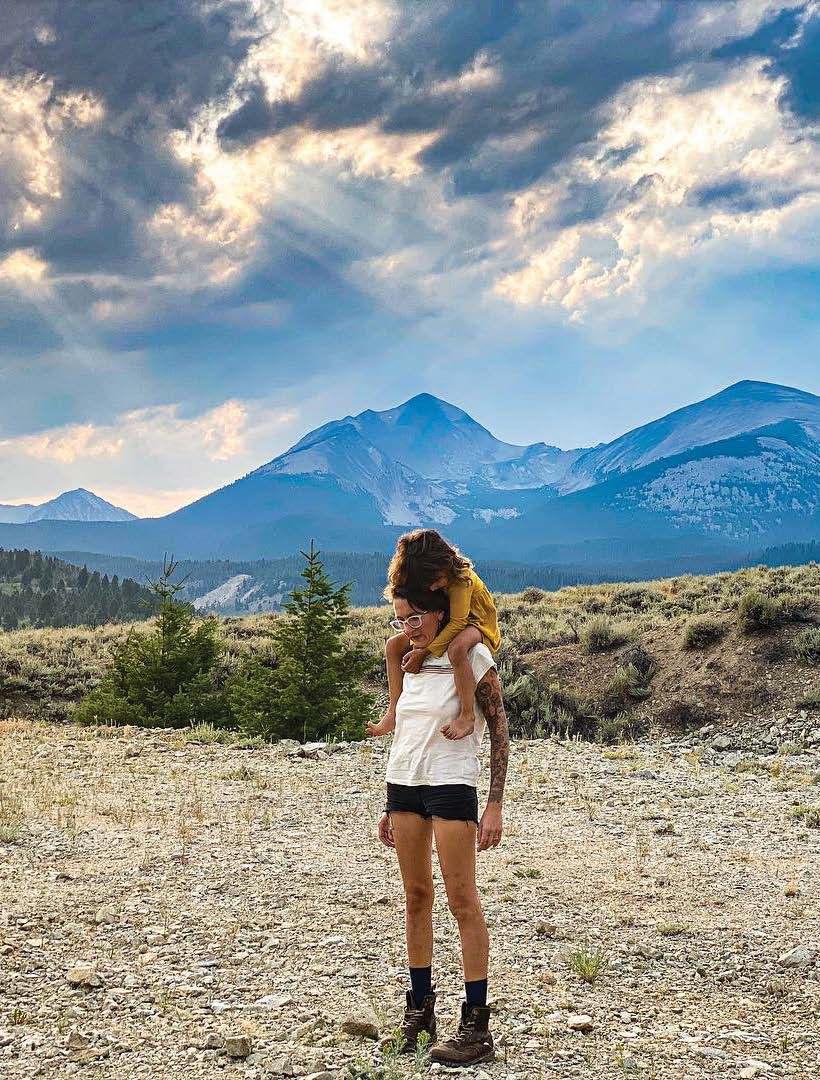
that clean drinking water should be available for all and it should be free. That’s why we use findaspring.com to source nearby springs where we can get natural spring water from hundreds of feet below the ground. It is not only some of the best water we have ever tasted but it is also free! They are surprisingly all over the states and while not always easy to find on our way, we always check the website to see if there is any nearby. Gas stations may also allow you to fill up your tanks if there are no other water fill stations around.

Electricity, as digital nomads we rely on it so much. We chose portable solar panels because ideally, we want to keep the motorhome in shade to keep it cool. I think we all can agree these things absorb heat and it takes a long time for them to cool, so with portable solar panels we can adjust them as the sun rotates without having to move the whole rig. Our system is a small 100 watt one but it's enough to power the
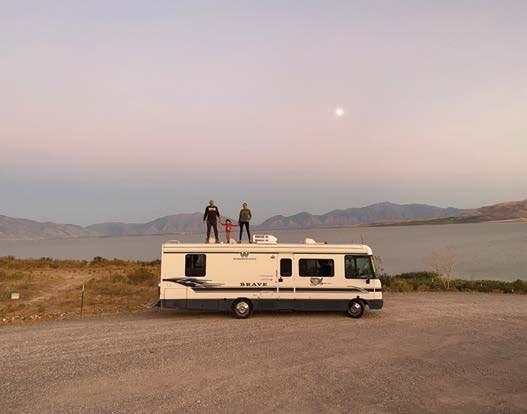
essentials. When we need the AC or on a cloudy day, we run our generator to charge the laptops. It has been a good set up for us, especially if you're on the budget. It's a good way to go if you don't want to spend a ton of money on a large solar system and especially if you don't know if boondocking is for you. You can always upgrade.
We don't have a time frame on how long we spend at a particular spot, I guess it depends on the location and accessibility to things we need. We have stayed in places from just one day to a month. Our preference is a minimum of two weeks. Just because it's free you can’t stay indefinitely as most places have limitations. Some of our favorite states to boondock were, Montana, South Dakota, South Carolina and Texas.
Prior to heading to our next boondocking spot we always fill up our water tank and propane. We learned having an extra propane tank is helpful as we do go through a lot of it. We’ve also found that a lot of the recreational areas bring out the locals on weekends. It's always good to pick their brains about local dump stations, water fill-up stations and

66 | ROOTLESS LIVING
other things that might be resourceful during our stay. We’ve even had locals offer to have us come to their home to fill up on water.
If you really want to conserve your water usage, and you are by a river, you can use it for dishes or showers just remember to use biodegradable soaps which won't pollute, harm animals or affect the ecosystem. We are just visitors on this planet, and we are not its only inhabitants. We always pack up our trash and clean around our camp and others. If we want this land to be available to us at no cost, we need to keep it clean so it won't be shut down due to human ignorance.

Whenever we find ourselves in the middle of nowhere, which is quite often, we always stay on top of checking the weather daily. You might not be notified by anyone if there is a storm coming or a fire which might have broken out near you. We always set our current location on our phones for any alerts that we may get, like we did in Washington. We had to evacuate because the sudden wind change made the fire, which was originally two hours away, spread much quicker with us in the evacuation zone.
Even if boondocking is not for you or you simply haven't done it because you are scared, please don't be. Just do it. You already took a big step by moving into a tiny home on wheels, this might just show you the magic of it all!
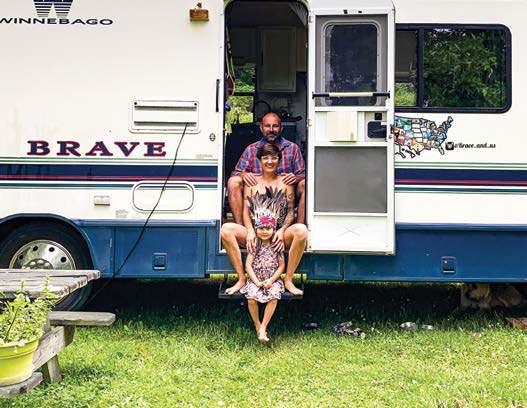
We are Magda, Flori, Luna, and our dog Tig. You can follow our boondocking adventures and more on Instagram @Brave_and_Us.

BRAVE AND US | ROOTLESS LIVING | 67
Boondocking is ... Enjoying Self-Reliance
I'm Katelyn. My husband is Nathan and our two sons are Zack and Luke. We have a 2-year-old pup named Ona. Together we are roaming around this country to find our freedom. One of the best ways for us to do that is by boondocking. We love it when the tires hit the dirt road and lead us to our next location. Sometimes the spot is a little sketchy, other times it's more perfect than we could imagine.
Our kids love boondocking. It's almost too easy to teach them in this type of environment. They thrive and learn so much in nature. They can unapologetically be themselves and be totally free.

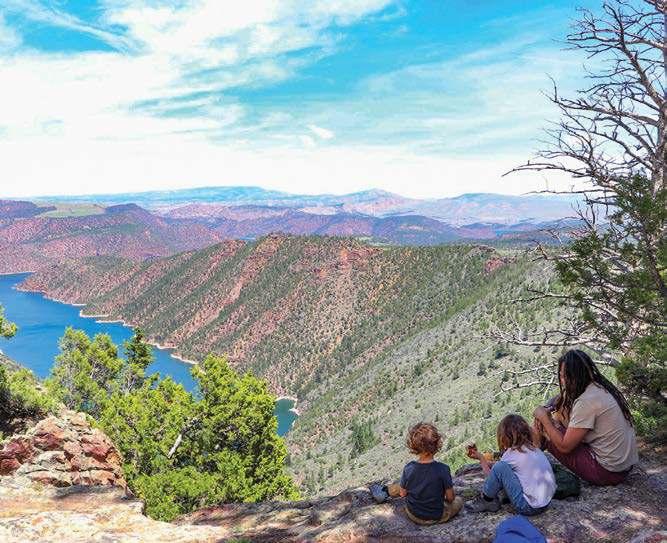 By Katelyn El-Obari
By Katelyn El-Obari
One of my favorite memories is rescuing tadpoles in Utah. We were boondocking with friends and found baby tadpoles drying out in a tire rut. We spent a week gathering them, relocating them to a nearby stream, creating safe tide pools to live in, and watching them grow into frogs. It was a perfect hands-on learning experience. They loved helping the tadpoles and watching them grow.
Ona also loves the freedom and running through the wideopen spaces. She loves climbing on rocks, chasing critters, eating sticks, and just being a puppy in the wild.
Boondocking takes work! More than we expected, and it definitely requires a "break-in period" to get used to all the unknowns. Now that we are "seasoned RVers" and have our flow, there are more rewards and fewer risks. Boondocking, especially on BLM land, gives us a sense of freedom and self-reliance that we don't typically get from a campsite or traditional camp setting.
We have two 100-watt solar panels with two 100 aH batteries powering us along our journey, no generators. Having such a minimal setup has taught us a lot! We have learned how precious water is since we only have a 40-gallon tank, and about our energy consumption. We love knowing we are powered by the sun which only adds to our "leave no trace" policy. It makes us feel even more aligned with nature, our values, and what we believe in. We have learned more about each other, our family dynamic, and a lot about ourselves. We have learned what we are capable of as a family.
We don't find our spots completely on our own. We use the help of Campendium, FreeCampsites.net, the Freeroam app, and iOverlander app.
We use those resources as a baseline to find our general camping area, then go scouting from there. We love scouting! We get to explore the area and go off-roading. What's not to love about that!? We are always excited to find the hidden quiet spots within the Forest Service and BLM land. We typically drop the trailer and take the truck around, searching as long as needed to find the perfect spot.
When it comes to our favorite spots, we prefer keeping those mostly a secret. I will say we have the most success when we actually take our time to scope out the whole area. We absolutely recommend dropping the trailer, especially down dirt roads, and enjoying your time searching for the gems. It has been worth it for us every time--leading to some of our best RV memories.
Before we leave a spot, or shortly after getting there, we do our chores. We stock up on groceries, take showers, do laundry, find a dump station, and fill up on water. Getting the work done first gives us more time to play and adventure. We have a lot of luck finding dump spots by typing it into google maps, or by looking around the area we're in--seriously when you're driving around just keep your eyes open! There have been a few times that the water and/or dump were at least an hour away, but other than that, we have a pretty easy time locating both.
We have so many memories to look back on. We have camped with others, and sometimes our only neighbors are the native wildlife. When I look back at where we started compared to now, I always laugh at our first experience.
We found a spot, plugged it into google maps, and blindly followed the GPS. We found ourselves off-roading in the middle of the desert near cliffs and ravines...trailer still hitched and bouncing like crazy through the ruts. We came to a crossroads where we truly thought we were going to tip the rig. Nathan looked out the truck window and yelled to me "are we going to tip or scrape!?" Never during my RV journey did I think my options were to bottom out or flip over and lose everything.
Luckily, we made it out (several stressful hours later) with only two broken jack stands and a large hit to our ego. What was once a horrible day, is now one of our funniest memories.
Boondocking is amazing! There is a huge sense of accomplishment knowing that you can take care of yourself. There are good and bad aspects, but we love living in nature. We love growing as a family, the privacy and intimacy it brings, and we love getting to be who we want to be.

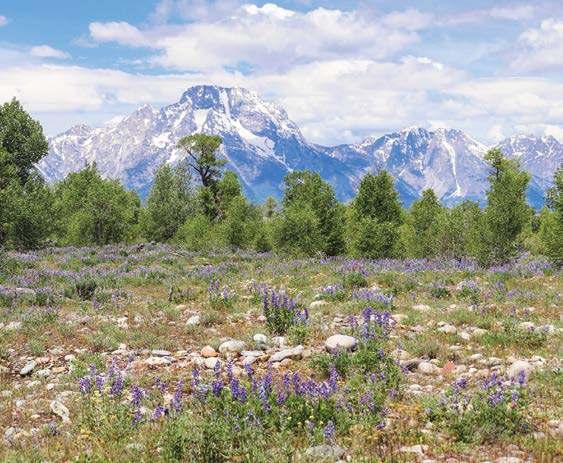
I would not trade this lifestyle for anything! Feel free to follow our adventures on Instagram at @roaming.to.freedom.
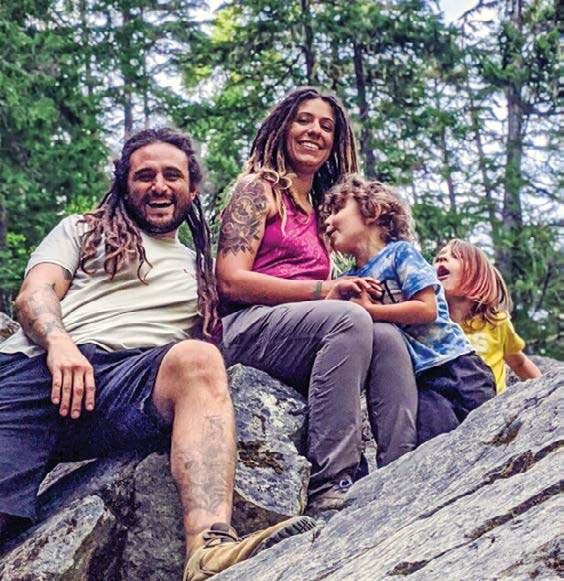
Boondocking Is … Freedom

Boondocking, for us, feels like an expression of freedom. Whether it’s on a mountain top or in a Walmart parking lot, we’ve never felt so free. It has completely rocked our world in the best way possible.
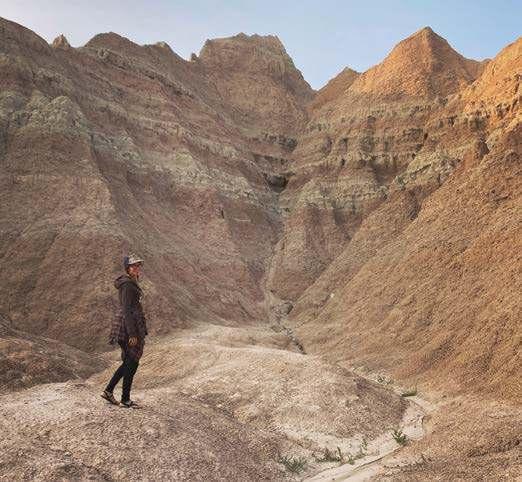
Before we launched into this full-time venture, we imagined ourselves spending most of our time doing the following things; staying in campgrounds, working a strict budget, and looking for workamping jobs. At that time, it was what we were used to. We were workamping in a campground for most of the summer in our home state of Michigan. It felt really rewarding to work for our stay and it was great for our six-year-old son to have other children to play with.
Over the summer we started following more full-time
By Markie Kinney
boondockers on Instagram. Inspired by their experiences, we started researching more. This led us to check out informative apps and websites like Campendium and The Dyrt. We quickly realized this was the way we wanted to go. When we left Michigan, we started heading west, straight for South Dakota. This seemed like the gateway to the vast west, where boondocking is plentiful. One would think Walmart would be a dire place to stay, but our first night was spent in a Walmart parking lot. To our surprise, we were cozy in that parking lot. We instantly felt free.
Wehaula30-fttraveltrailerpairedwithapermanentlymounted generator. Having this set up has made boondocking on-thego feel so much easier and secure. Our fridge and lights run on a 12-volt system so we only need to run the generator

70 | ROOTLESS LIVING | BOONDOCKING IS
when appliances need to be run like the TV or AC. We have figured it costs about $5 a day to run the generator. This is incredibly cheap
compared to the average electric campsite. We recently purchased a solar set up for our future skoolie project, which we plan to live in long term. Generators are cool but we are completely stoked to have the sun power us!
While electric has come easy, water usage has definitely been a huge adjustment for us, well, mostly me. We are getting better every day! Campendium has also been essential for helping us find dump stations along the way.
Along with exploration and experiences, a major motivating factor in our full-time venture is financial freedom. To us, boondocking and financial freedom go hand in hand. We are spending less on bills than when we lived in a mortgage-free house. All the while, we are exploring the country. It’s such a thrill.

Since our launch, we have found some amazing boondocking spots, primarily through Campdemium. The app is free and I recommend it to anyone, full-time or not. Our favorite spot so far was on a mountaintop in the Black Hills, overlooking Deadwood, SD. The views were incredible, there was plenty of room for the kids to play outside, and it was well spaced out. Deadwood has a lot of free daily entertainment which we really enjoyed. The site is also close to Spearfish where
we found the amazing, and free, D.C. Booth Historic Fish Hatchery.
For anyone looking to start out, I definitely recommend the following; use a couple of different apps, aim to arrive at your new spot well before dark, and have a backup plan in mind. Most importantly, enjoy your freedom and exceptional views!
My husband, Ray, and I travel with our two kids, Nash and Juniper. You can follow our ever-evolving adventures on Instagram @life.of.raditude.
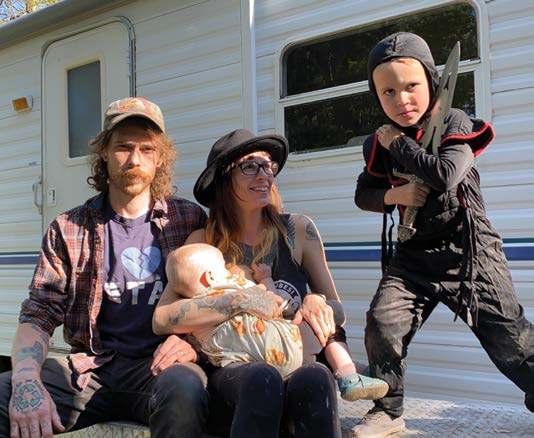
71
ANSWERING YOUR SOLAR QUESTIONS
When it comes to solar, it can sometimes be hard to get either a straight answer or an answer you can understand. That’s why we’ve teamed up with the professionals at Future Solutions to answer all your solar questions and help you understand more about your advanced solar energy needs.
Do I have to buy a roof rack for my Sprinter solar setup?
The short answer is yes. The other option would be stick-on solar panels and while they have come a long way in terms of quality, the lifetime of a stick-on panel is only 3-5 years where a ridged panel can last you 20+ years. You will also be able to get more solar on your Sprinter with a rack install. While it’s not absolutely necessary, it is the better option.

72 | ROOTLESS LIVING | ARTICLE NAME
What’s the recommended amount of solar to run an air conditioner? We're happy with our solar setup but it’s small so we can't use it for the AC or microwave.
You would want to first add to your battery bank. From there you can add on solar panels to match your batteries recharging needs. Future Solutions recommends a minimum of six 100 amp-hour lithium batteries if you are wanting to run an air conditioner. You will not be able to run it indefinitely, but with around 1200 watts of solar as well, you could expect to see about 4 hours of air conditioner use during the day.
You would definitely want to have a generator to help supplement charge, as typical running loads like this will pull more power out of your battery bank than most solar arrays can put back in. With 600 amp/ hours of lithium battery, 1200 watts of solar, and a 3000 watt inverter, you could run all the items in your coach from the inverter. Just not all at the same time.

What's the best way to clean rooftop solar panels?
Soap and water. You want to avoid scratching them but just regular old soap and water works great. How often you clean them will really depend on how you use your rig and the types of roads you’re driving down. If you drive down 5 miles of dirt road to get to your campsite, then you might want to check on the roof to see how the panels fared and if they need to be cleaned.
Much like when you drive a car through a dusty road, your panels will collect dust and dirt which can affect their efficiency. As a new solar owner or someone who travels long distances often, you should take a look once a month to see how they are doing.

Have a solar question you’d like our experts to answer?
Email us at collab@rootlessliving.com
Q&A
Rock Creek, Custer National Forest Red Lodge, Montana

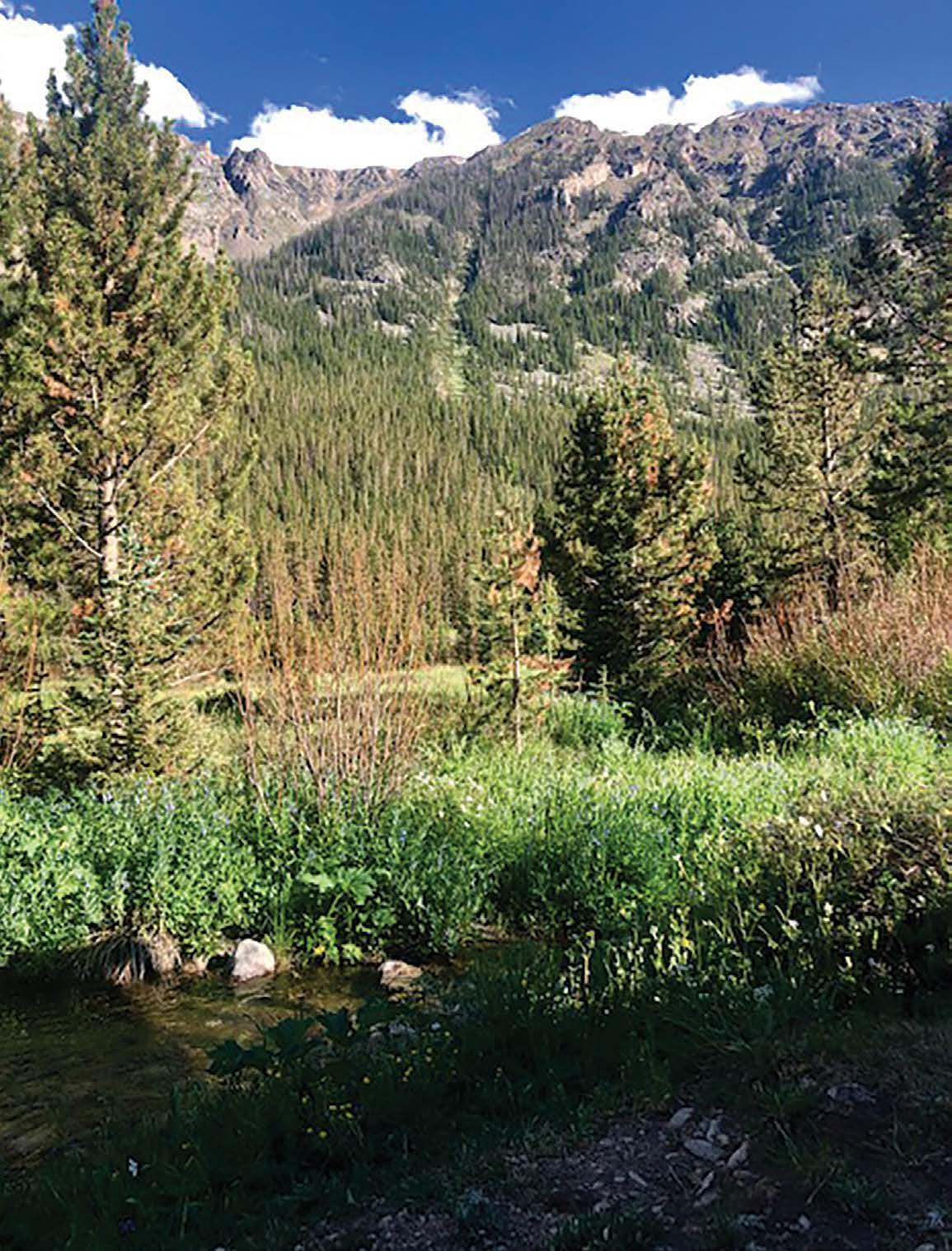
GPS: 45.0465, -109.4247


After 4 years on the road boondocking all over the USA, one of my top favorite spots so far has to be Rock Creek, south of Red Lodge, Montana. It has everything you could wish for in the perfect boondocking location: gorgeous mountain views, a running creek with lots of tiny waterfalls, wildlife, wildflowers, friendly locals, and no cell service. Best of all, it offers many spots which are mostly all waterfront and fairly private if you wish or larger areas better suited for groups.
It's nestled down a very long dirt road in the mountains just before you get to Beartooth Pass off the Beartooth Highway. Don't worry, you don't have to go over Beartooth
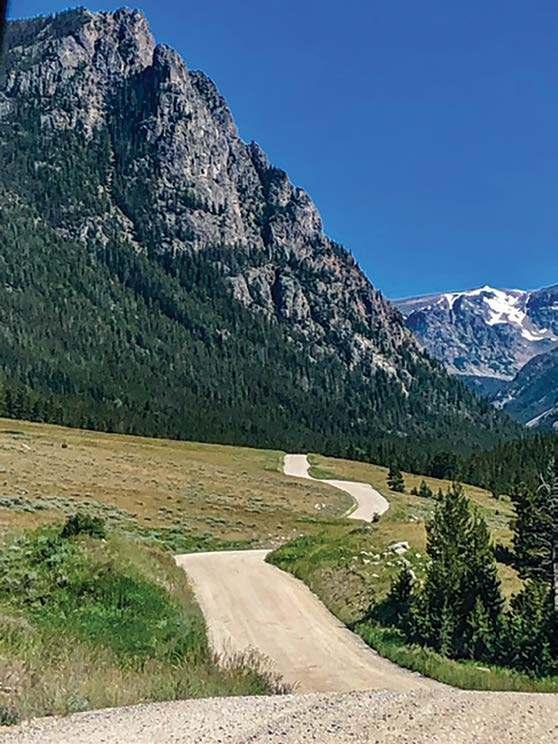
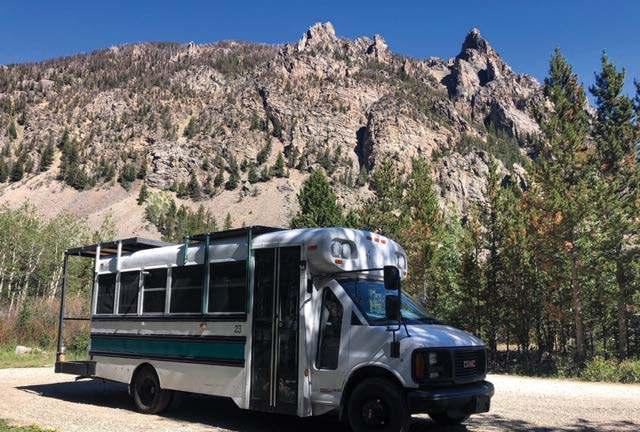
Pass. The drive out there is also beautiful. It can fit any size rig as long as you can find a spot in one of the 50+ spots. If you don't find one because it's a busy weekend, then there are places to turn around.
Even when it's full with other boondockers it's peaceful and serene because of its location down in the valley and the lack of technology usage. The dirt road is nice with plenty of passing areas where it's narrower but there are still plenty of potholes to dodge. I’ve found that dirt roads lead to the best boondocking spots! The closest town is Red Lodge, the people are friendly and there's even a free dump station at the local convenience store.
Maddie, Willie, & Elle @wanderin_wings
Easy as Pi
By Lucinda Belden
Pi is the most common mathematical constant. Every time I look at different trees on the mountainsides, or types of grasses in the fields, or countless flowers in bloom by the side of the roads, or outcroppings of rock formations along rivers I cross…I know there are even more reasons why someone might choose a rootless life – just like Pi, limitless.
I almost, just almost, do not think I ever had a choice. I spent my childhood moving from small town to small town every few years. I spent my young adulthood rearranging the furniture in my rental to force change because I could not afford to move. As an older adult, I invested in a career doing web contract work around the U.S. I estimated by the time I was 50 I had moved over 20 times. If I traveled in a circle on all these moves, the diameter would be equal to Pi. So why not make my Pi just a little bigger.
It really should not be a surprise when at the age of 55 my husband and I bought an RV, sold the home we’d lived in for less than 10 years, sold or gave away everything we owned, and went full-time. I think we only survived living in one place for almost 10 years because we bought motorcycles and the ‘on the move’ addiction was satisfied, for a while. Like I said – becoming rootless seemed almost inevitable and we decided to make our travel circle a whole lot bigger.

The choice which lead us to full-time RVing grew from a central need to get out of the city and ride our bikes in new directions. Our former sticks and bricks lifestyle could
no longer keep up with our evolving lives. I think if anyone who is rootless seeks the main reason why they started this lifestyle they will find it rooted in at least one simple desire, hobby, or fascination. One that no longer could be satiated or contained by staying in one location.
When people ask how we make full-timing possible I can talk about budgeting, planning, researching but that is just the foundation of what you do to start any change in your life. My answer to that question is ‘Follow your passion’. When you put your passion out front, you will find a way to make it all come together. Of course, do not leave out the critical steps of budgets, plans, and research. Some will tell me I am oversimplifying or making it sound too easy and to them, I will say that is an excuse – try harder. Or maybe your passion is not too big for your one location yet.
Our passion became motorcycles. My husband rides a Harley Heritage and I ride a Harley Sportster with a sidecar. This helped direct us on the type of RV to buy, a toy hauler, and this in turn helped us determine what tow vehicle we needed. Where we decide to travel is determined where motorcycle events and rallies are around the United States. We balance that with opportunities to see friends and family and a sub-passion we have…seeing the largest, oddest, smallest, or most unique things nature or humans have created. We got here by focusing on our passion and taking baby steps to move forward – overcoming each issue that stood in our way and not faltering under fear of the unknown.
Here is what you need to do. Identify your passion. Actually, your passion should already be in the drivers’ seat of your life!
Next, break down into steps everything you think you need to go full-time. This list doesn’t have to be perfect because you will find you will eliminate things from the list as you get involved in moving forward because they just won’t be as necessary as you initially believed. Or you will find it’s something you can deal with once you are on the road. Work through each list item until you make it happen.
If you find you keep running into a wall on solutions, ask yourself why you think this item is on the list in the first place.
Once you identify why you placed an item on your list, you will be able to break it down to the manageable pieces. Those pieces will help you find other solutions.
For example – if you are planning on trying to pack away all your sentimental items so you can keep them with you, but you are running into storage issues, why are you taking them. Is it so you can leave them to your children or family members? Why not pass them along now – problem solved.
As you solve or decommission the critical need for each item on your list, you will move closer to becoming a full-time RVer. I never said choosing this lifestyle was as easy as pie – but easy as the constant number of Pi. It never gives up;
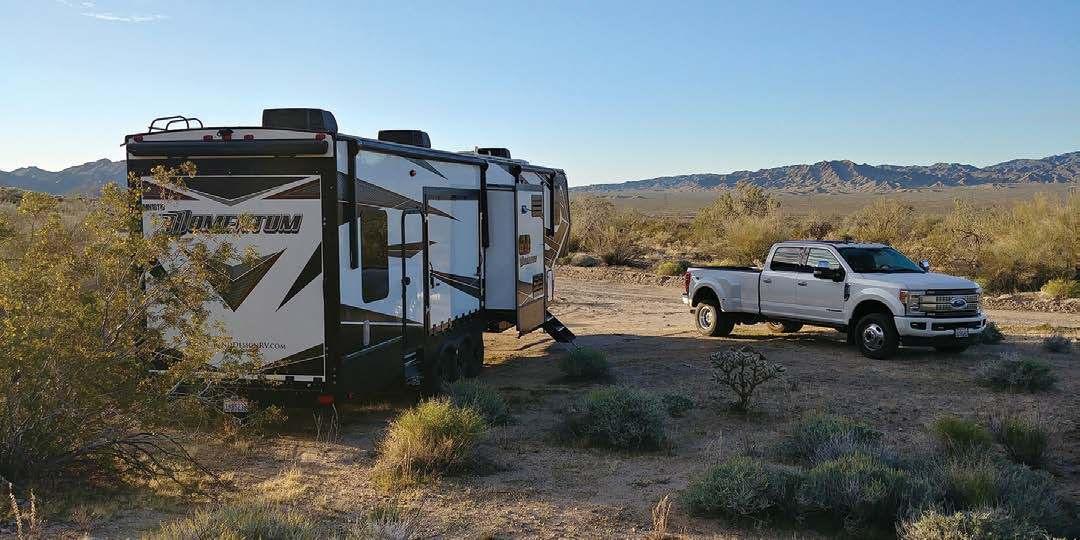
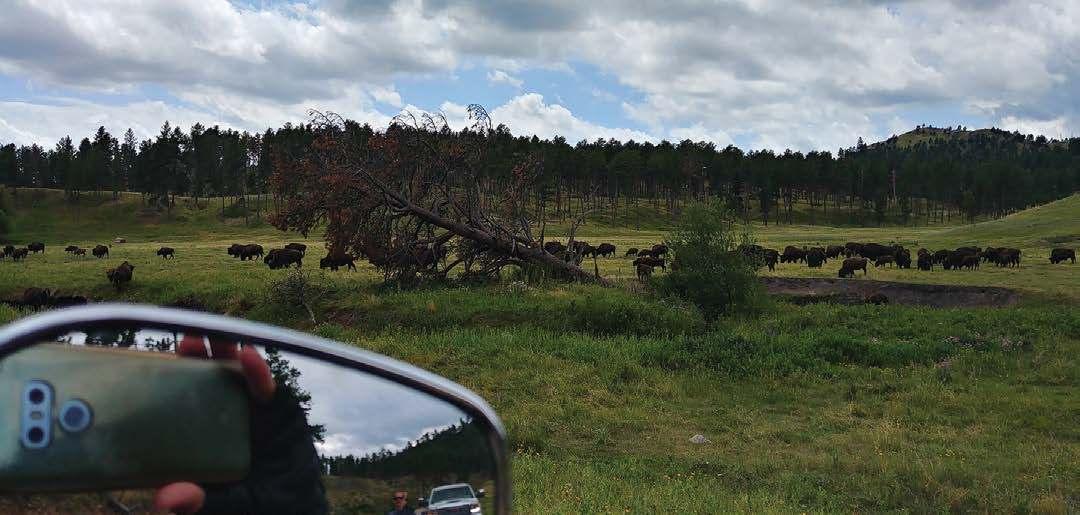
76 | ROOTLESS LIVING
it just keeps going. Pi is used in Heisenberg’s uncertainty principle, Einstein’s general relativity equation, and many more equations. Clearly choosing a full-time mobile life is not easy as pie but applying some formula to your choice can make it a lot easier.
We have been full-timers for eight months so far. Everything has not gone as planned. As most people will do, you may jump to that being a negative comment. Living day to day as a full-time RVer, recognizing everything will not go as planned, can be a wonderful experience. We have ridden with buffalo on motorcycles in a state park.
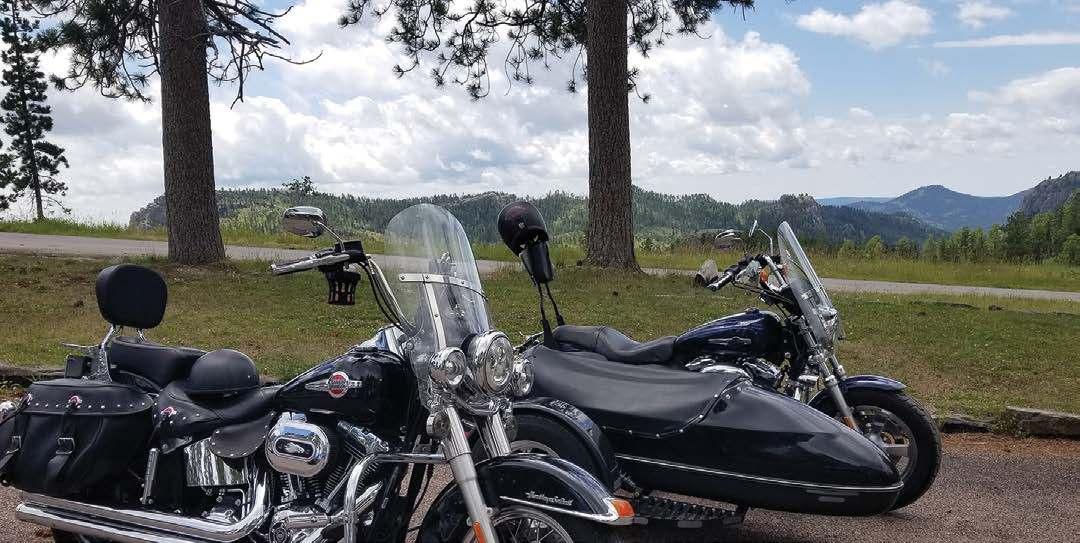
One night we sat on our RV porch under the stars and were serenaded for free by a local musician. We have joined impromptu poker games with the local RV park staff. We have hiked trails at night we didn’t even know were there, and were rewarded with a symphony of firefly illuminations. We listened to a story from a winery owner that changed our direction for the next day, so we did not miss a local experience.
New memories grow, and I am glad they are not planned. Capturing these unplanned moments is the epitome of rootless living. This lifestyle choice is not just pie in the sky. Apply your solution and you can make constant change and experiences a part of your daily routine.
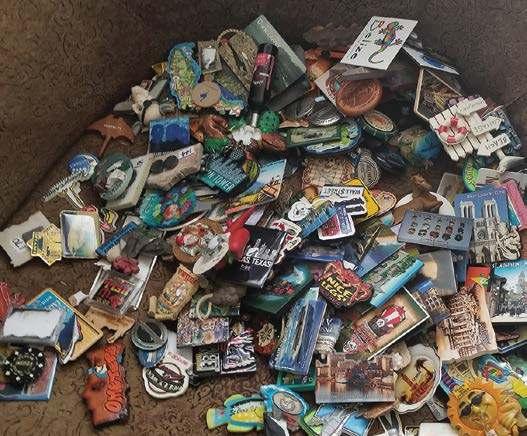
About the Author:
Lucinda Belden is an avid sidecarist, world traveler, and fulltime RVer. She works full-time as a writer and travel agent on the road. Follow her at FB.com/DirectionWideOpen. Get her quarterly RV/Motorcycle email newsletter at TwistYourThrottle.com.

EASY AS PI | ROOTLESS LIVING | 77
ALASKA OR BUST
 By Claire Jackson
By Claire Jackson
We are the Jacksons, Hunter, Claire, and Sadie, and we are a full-time travel family. We traded our three-bedroom home in South Carolina for a 22-foot Winnebago motorhome seeking more adventure, nature, and experiences. We homeschool our daughter, and enjoy boondocking any chance we get!
Our story started nearly 10 years ago when Hunter and I got married, sold everything we owned, and camped our way to Alaska. Despite a few pretty substantial bumps along the way, it was an incredible trek into the Last Frontier.
Jump back to 2011. It was the spring work camping season, and we had a job commitment. "It’s $2,200 and a week for repairs,” I remember Hunter explaining to me as I looked at him in shock. That is what it would take to fix our transmission, which had just blown on the interstate in Augusta, Ga. - on day one of our trip and only four hours from home. Nearly in tears, I told him we should just do it. How would we ever make it 4,600 miles to Tok, Alaska if we could barely make it out of our home state?
We were towing a 32-ft Prowler travel trailer and the 1992 F250 diesel farm truck we drove just couldn’t cut it. We parked the camper at Mistletoe State Park for a week while the truck was in the shop. We didn’t even tell our families that we were stalled; it was too embarrassing. Once we got on the road again, we were determined to make it to our destination no matter what. Alaska or Bust, right?
When we made it through Montana to the Canadian border,
we were asked to vacate our vehicle. We were interrogated, and our camper was searched for drugs by the K9 unit. We were just young hippie kids -- of course, they found nothing, and let us through.
It wasn’t until we arrived at the Yukon Territory that things got interesting. Yukon is the most western territory in Canada and the least populated. We would drive almost 300 miles without seeing a gas station. It was also not uncommon to see vehicles that had broken down on the side of the lonely highway, completely stripped of their tires and rims. Yukon is the place we saw our first moose. I was so surprised at how big it actually was.
We saw plenty of wildlife on our drive through Canada, but one of my best memories was being stranded at the top of the Rocky Mountains in the midst of a bison herd, which continuously stampeded back and forth across the road ahead of us. At nearly midnight, we could see only the glint of their eyes in our headlights but could feel their heavy steps as the ground rumbled underneath us. It wasn’t until an 18-wheeler plowed through the herd (no animals were injured), that we felt brave enough to drive forward. Holding our breath, and hoping that no bison would ram into our vehicle, we proceeded on our way.
Tok is only about 100 miles past the border and is known as the “Gateway to Alaska.” We took full advantage of our weekends that summer and did a few touristy things further inland.
78 | ROOTLESS LIVING
We spent our first wedding anniversary on a glacier cruise in Valdez. Fairbanks offered us the opportunity to sail down the Chena River on the Riverboat Discovery, and explore an Athabascan Indian village. Later in the summer, we visited my cousin in Anchorage and got to see the house my mother lived in as a girl. We also hiked Flattop Peak at Glen Alps, but it was so foggy that day, we could hardly see 10 feet ahead.
Hands down, the best Alaskan drive we experienced was through the Matsu Valley en route from Tok to Anchorage. During the warmer months, the mountains are a deep emerald and at one point, we just had to pull over and admire the undeniable beauty.
Closer to the campground, we went four-wheeling into the bogs to search for moose and picked wild blueberries. We accidentally stayed up until 2 a.m. because the sun doesn’t fully set during Alaskan summers; and we grew vegetables in Tok, which were bigger than any veggies I had ever seen.
Overall, it was a wonderful time. Totally worth the tumultuous trip there. I realize now -- almost 10 years later -- that our Alaska experience was a spark, which kindled the adventure we are on now. As a full-time RV family with a child, our travels look much different this second time around.
Our rig is much smaller now, and we really embrace the minimalist mindset. We also enjoy boondocking and love the challenge of not depending on modern comforts and conveniences. We spent this summer traveling from the coast to the desert, up to the mountains of Montana, and across the plains. We are much more prepared this second time around as a full-time RV family, and our days are much more structured. Our trip to Alaska was a short but great adventure. Our travel lifestyle now is for the long-haul, and we can’t wait to see where the road takes us in the coming years!
PLANNING A FUTURE TRIP TO ALASKA? HERE ARE OUR RECOMMENDATIONS:
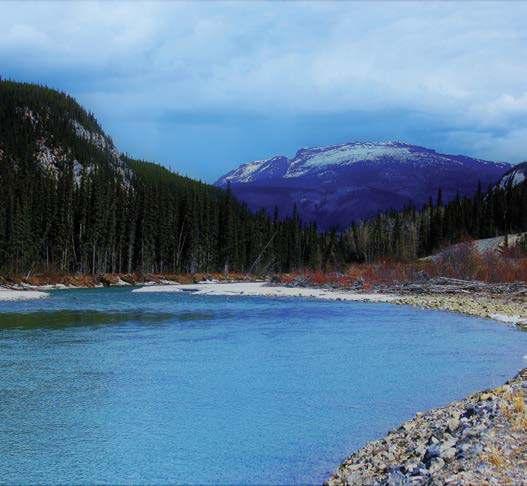

Bring extra gas cans. I remember one night, we literally rolled into a gas station in Yukon Territory, running on fumes, just as they were closing up shop. I would highly recommend stocking up ahead of time.
Towards the end of the Alaska Highway, the 100 miles from Whitehorse to Haines Junction, the road is moderate to very bad. While it is still accessible, and large rigs can definitely make the journey, there are sizable frost heaves and potholes. Expect to take it very slowly! Pack a spare tire just in case.
Don’t be afraid to utilize the many turnouts throughout
ALASKA OR BUST | ROOTLESS LIVING | 79
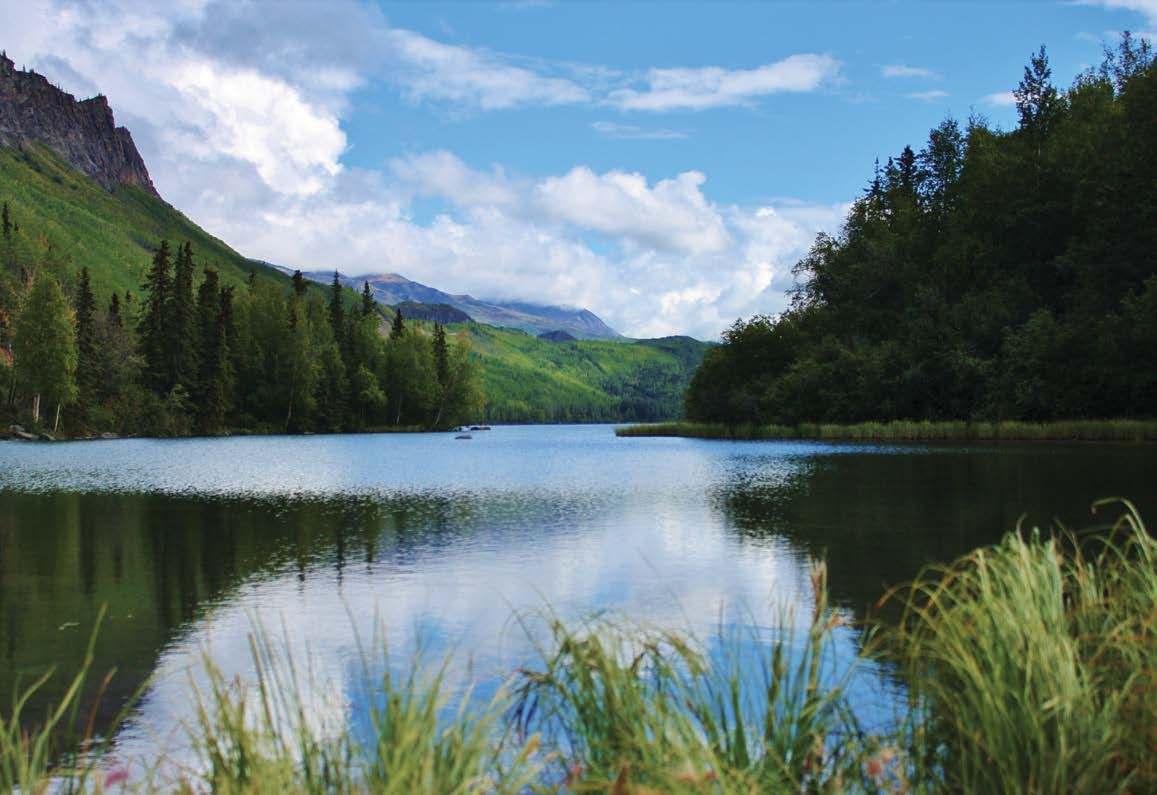

Canada’s Banff and Jasper National Parks. We can’t wait to boondock our way back to Alaska!


Eating plant-based in Alaska is a challenge. Most of the produce there is transported in by plane or truck. Especially in the more remote towns like Tok, it’s hard to find fresh, palatable produce in stores. There was a truck that came by the campground twice a month with fruits and veggies, but otherwise, we were left to eat frozen processed foods. Hunter and I stocked up on extra-large cans of chili from Costco. Looking back now -- and currently being on a plantbased diet -- I can’t think of anything worse. But we made it work.
Invest in The Milepost, an Alaska Highway travel guide with mile-by-mile highway logs.
Plan to be flexible. Things won’t always go the way you plan -- in life, and along the road to Alaska. It’s how you handle those moments that define your future. I’m glad we didn’t turn back home when the transmission blew up. Sure, it changed some of our journey, but it’s a memory we look back on now and laugh about. And exploring Alaska only made the desire to travel that much stronger.
About the Author:
Claire Jackson travels with her husband Charles and daughter Sadie full-time in a 22-ft Winnebago motorhome. They homeschool, boondock as often as possible, and love life on the road. This is their second time as a fulltime RV family, and have spent this summer camping from the east coast to Montana and back. Follow along on Instagram @ToTheWoodsTravel or on their YouTube channel @ToTheWoods. You can also visit their website at tothewoodstravel.com.

ALASKA OR BUST | ROOTLESS LIVING | 81
GEAR GUIDE
Looking for the perfect gift for a digital nomad? We asked the #RootlessLiving community what gifts they would like to recieve and here is what they had to say! Shop All Of Our Rootless Living Gear Guides at Amazon.com/Shop/RootlessLiving
TRAVEL BERKEY GRAVITY-FED WATER FILTER
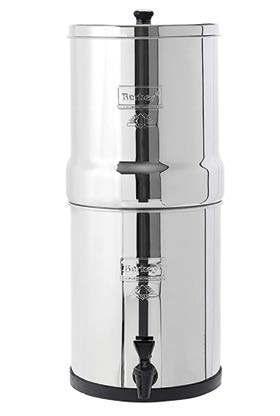
Berkey systems equipped with Black Berkey Purification Elements purify water—not just filter it—by removing greater than 99.99% of viruses and greater than 99.99% of pathogenic bacteria. The portable Travel Berkey Purification System effortlessly purifies water for about 1-3 people each day.
DAMA INFLATABLE STAND UP PADDLE BOARD

DAMA stand up paddle boards can be deflated and packed down into the included backpack. The drop-stitch materials adopted in the DAMA paddle board make it lightweight and portable for easy transportation.
MAKITA LITHIUM-ION COMPACT CORDLESS VACUUM KIT

The Makita 18V Compact LithiumIon Cordless Vacuum is a compact and powerful solution for fast and efficient cleaning. Bagless 2 stage cloth filtration system allows for easier cleaning and quicker debris disposal. Screen reader support enabled.
JACKERY PORTABLE POWER STATION WITH OPTIONAL SOLAR PANEL
Power your outdoor recreation with this instant solar generator. The Explorer 1000 can be quickly recharged within 8 hours by connecting 2 SolarSaga 100W solar panels.

82 | ROOTLESS LIVING
WEBOOST DRIVE X RV CELL PHONE SIGNAL BOOSTER
Capable of reaching towers at distances up to 33% farther, the weBoost Drive X RV signal booster offers fewer dropped calls, better voice quality, faster mobile internet, improved audio and video streaming, and greater hotspot capability — even in remote areas.
CROWNFUL ICE MAKER MACHINE FOR COUNTERTOP
Crownful Portable Ice Maker produces up to 9 pieces of ice cubes in just 10 minutes. It has a quiet cooling system that requires low energy to cool making it ideal for your home on wheels!

TIREMINDER TIRE PRESSURE MONITORING SYSTEM
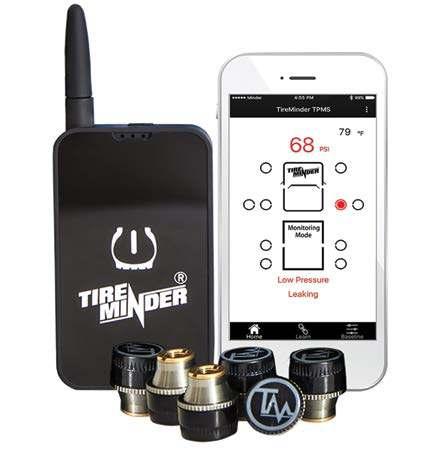

Protect your RV with the world's first and only smartphone-based tire monitoring system designed specifically for RVs

As with all the gift card requests, they take up zero space!
WISE OWL OUTFITTERS DOUBLE CAMPING HAMMOCK WITH TREE STRAPS
Made of high quality heavy duty parachute nylon, this extra soft yet super strong material gives you the most comfortable and relaxing experience ever!

GEAR GUIDE | ROOTLESS LIVING | 83
NETFLIX GIFT CARD
AUDIBLE CREDITS

BLACKSTONE TABLETOP 22 INCH PORTABLE GAS GRIDDLE

The long drive companion! An all-you-can-listen catalog including thousands of audiobooks, podcasts, and originals.
ELIDE FIRE BALL SELF ACTIVATION FIRE EXTINGUISHER
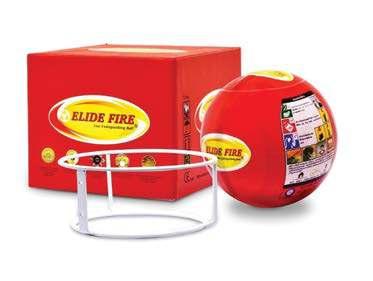
This portable grill makes it easy to cook a quick meal wherever you are without the hassle of setting up a full sized grill. Featuring two independently controlled burners making it a versatile cooking surface where you can cook several foods at once and not burn a thing!
The only patented and insured genuine extinguishing ball in the USA. This revolutionary selfdetonating device is designed to extinguish a fire.
AIRBNB GIFT CARD

"For when we need a break from the van plus steady wifi, laundry and a long shower"
UV Block with an open view. This side RV awning, blocks about 86% of UV to protect your skin and eyes while offers a wide view.

84 | ROOTLESS LIVING
TENTPROINC RV AWNING SIDE SHADE
HONDA 2200-WATT SUPER QUIET PORTABLE INVERTER GENERATOR

So quiet, your neighbors will thank you. The EU2200i operates at 48 to 57 dBA, which is less noise than a normal conversation. This makes it ideal for camping, supplemental RV power and any other activity that requires quiet operation.
AMAZON GIFT CARD

The perfect way to give them exactly what they're hoping for - even if you don't know what it is.
CARMTEK CAMPER LEVELER KIT
AMERICA THE BEAUTIFUL PASSES

Avoid the hassle of setting up your camper with travel trailer leveling blocks or planks under your tires. Level your RV, camper or trailer in 5 minutes or less with the best RV leveling system on the market!
The gift that keeps on giving, all year long! The National Parks and Federal Recreational Lands pass is your ticket to more than 2,000 federal recreation sites.
OMNIA PORTABLE OVEN

With an Omnia, you can make fresh-baked bread and delicious oven dishes directly on the stove. An ideal gift for the nomad chef in your life.
THERMACELL PATIO SHIELD MOSQUITO REPELLENT
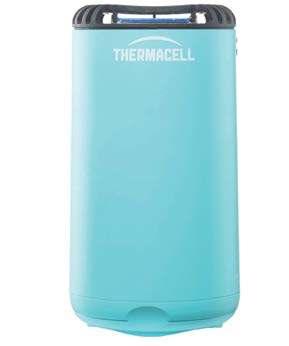
No chemical sprays, wipes, DEET or lotions on skin – Patio Shield is more effective and repels mosquitoes without sprays, scents or flames of torches, smelly citronella or messy candles.

GEAR GUIDE | ROOTLESS LIVING | 85
CONTRIBUTORS:
Marcus & Megan Wickes
Rachel Oldenburger
Jennifer Jennings
Crystal Davis & Caleb Barnaby
Sarah Howard
Diana Ditkof
Brett & Meredith Shoemaker
Tom Englebert
Josh Atwood
Jessica Kaiser
Jamie Stovall
Cecilie Ballegaard Thuelund
Magda Nogas
Katelyn El-Obari
Markie Kinney
John Tennant
Maddie, Willie, & Elle
Lucinda Belden
Claire Jackson
Rootless Living Magazine

Volume 1 | Issue 6 | Nov/Dec 2020
Publisher Demian Ross
Editor Nikki Kirk
Advertising Information: sales@rootlessliving.com



ROOTLESS LIVING • 3916 N POTSDAM AVE #3194, SIOUX FALLS, SD 57104
Disclaimer: One of the great things about digital publications is the ability to link you directly to the products or services you want to hear more about. Some of the links in this issue are affiliate links where we earn commissions on goods or services you buy. These commissions help us to continue to publish the magazine. Rootless Living is also a participant in the Amazon Services LLC Associates Program, an affiliate advertising program designed to provide a means for sites to earn advertising fees by advertising and linking to Amazon.com. If you have any questions please don’t hesitate to reach out to us at info@rootlessliving.com
86 | ROOTLESS LIVING | FOR NOMADS, BY NOMADS
FOR
B Y NOMADS LET’S CONNECT #rootlessliving @rootlesslivingmag /rootlessliving @rootlessliving SUBSCRIBE TO THE PRINT EDITION rootlessliving.com/print
Copyright © 2020 DNI Group LLC. All Rights Reserved. Reproduction in whole or in part without written permission is prohibited. No responsibility is assumed for unsolicited submissions.
NOMADS
Extra Pack of Peanuts Travel Podcast
Hosted by Travis Sherry, this podcast will teach you everything you need to know to travel more and spend less.


How I Built This with Guy Raz

The stories behind some of the world’s best known companies.
Radiolab

The show known for its deep dives journalism and innovative sound design.
No Stupid Questions
A production of Freakonomics Radio, the podcast where there are no “stupid questions”.

Office Ladies
Each week Jenna & Angela are breaking down an episode of The Office with exclusive behind the scenes stories.

Dear

Authors Matt & Karen Smith share stories of their travels to all the U.S. National Parks
The Athletic NBA Show

This is Uncomfortable
A daily NBA podcast featuring a rotating line up of the best insiders, writers, and reporters from The Athletic.
A show about life and how money messes with it.
PODCASTS FOR THE DRIVE PODC A S T S FOR THE DRIVE
Podcasts are listed as a courtesy to our readers and compiled from recommendations in various Facebook groups. If you have a podcast you think we should include, email us at info@rootlessliving.com
LISTEN UP | ROOTLESS LIVING | 87
Bob and Sue

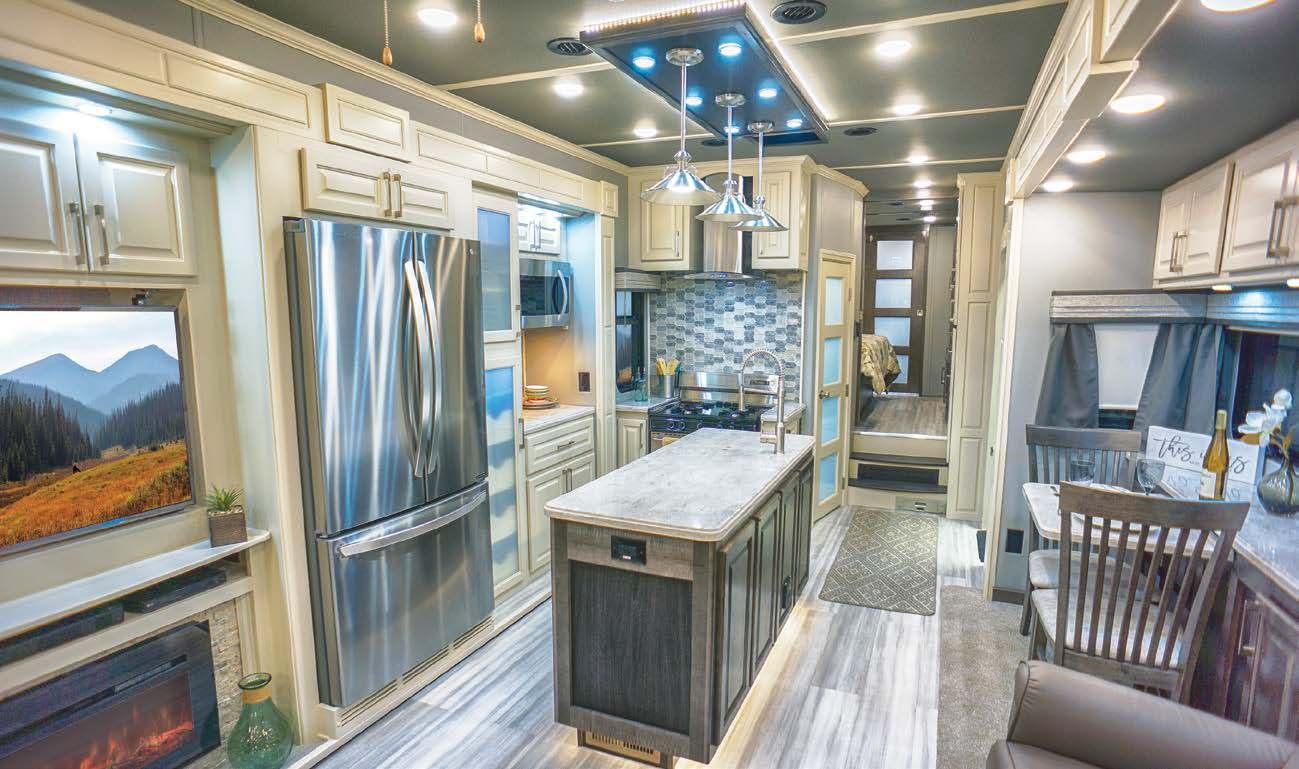






(844)284-6678 | Luxefifthwheel.com | Luxehaulers.com Luxury Fifth Wheels, Luxury Toy Haulers, and HD Fifth Wheel Haulers Built to Last 5 Sold Factory Direct



























































































































 By Marcus & Megan Wickes
By Marcus & Megan Wickes







 By Rachel Oldenburger
By Rachel Oldenburger

























































































 By Jessica Kaiser
By Jessica Kaiser































 By Katelyn El-Obari
By Katelyn El-Obari






















 By Claire Jackson
By Claire Jackson













































